Abstract
This randomized controlled study compared two types of case management for skilled nursing level patients living at home: the centralized individual model and the neighborhood team model. The team model differed from the individual model in that team case managers performed client assessments, care planning, some direct services, and reassessments; they also had much smaller caseloads and were assigned a specific catchment area. While patients in both groups incurred very high estimated health services costs, the average annual cost during 1983-85 for team cases was 13.6 percent less than that of individual model cases. While the team cases were 18.3 percent less expensive among "old" patients (patients who entered the study from the existing ACCESS caseload), they were only 2.7 percent less costly among "new" cases. The lower costs were due to reductions in hospital days and home care. Team cases averaged 26 percent fewer hospital days per year and 17 percent fewer home health aide hours. Nursing home use was 48 percent higher for the team group than for the individual model group. Mortality was almost exactly the same for both groups during the first year (about 30 percent), but was lower for team patients during the second year (11 percent as compared to 16 percent). Probable mechanisms for the observed results are discussed.
Full text
PDF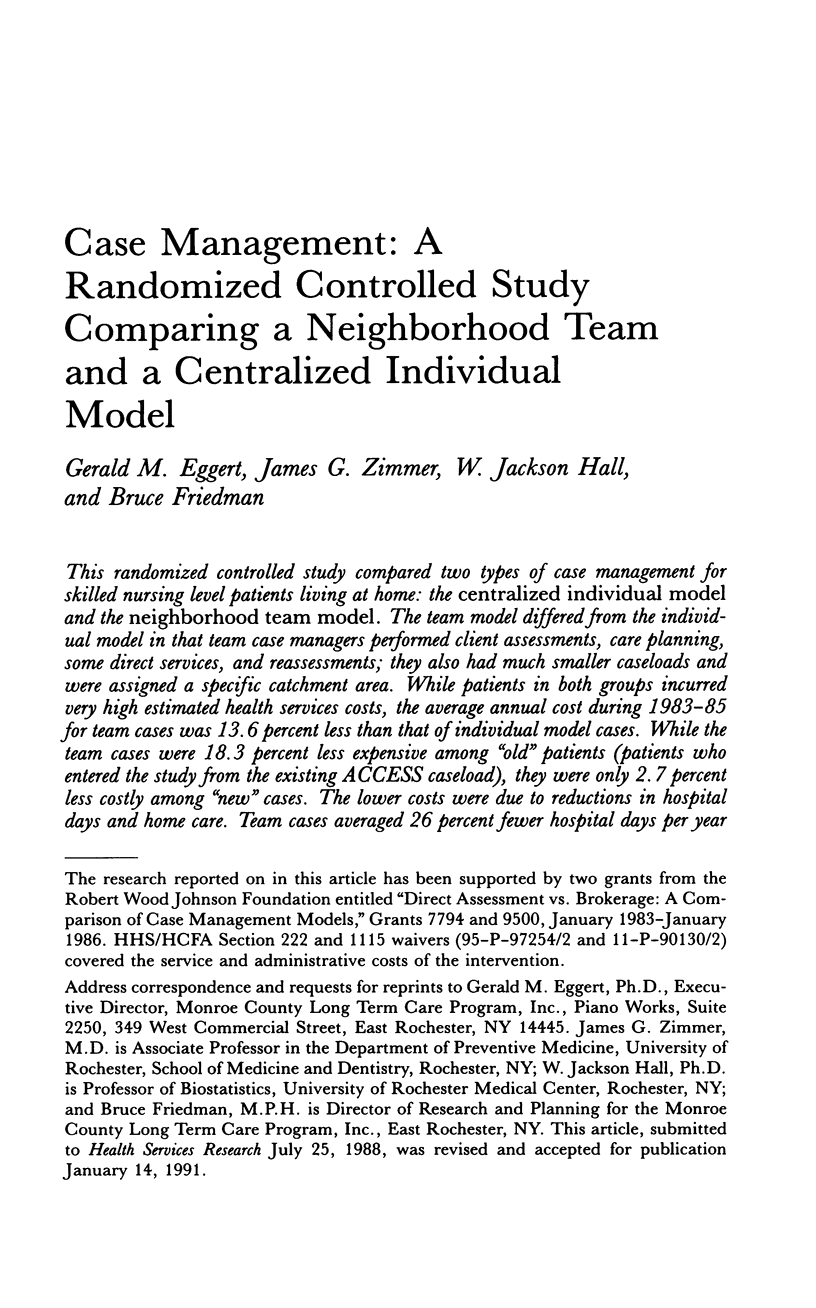
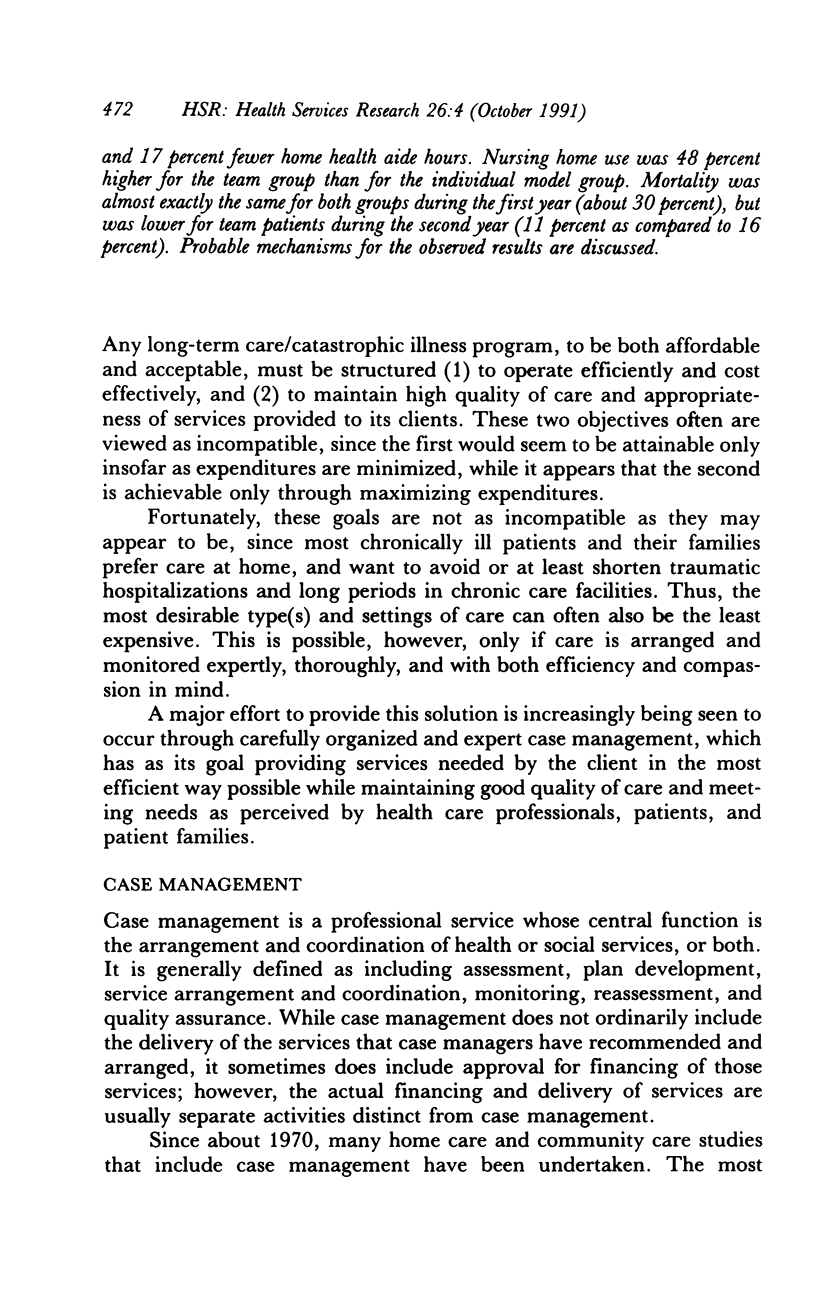
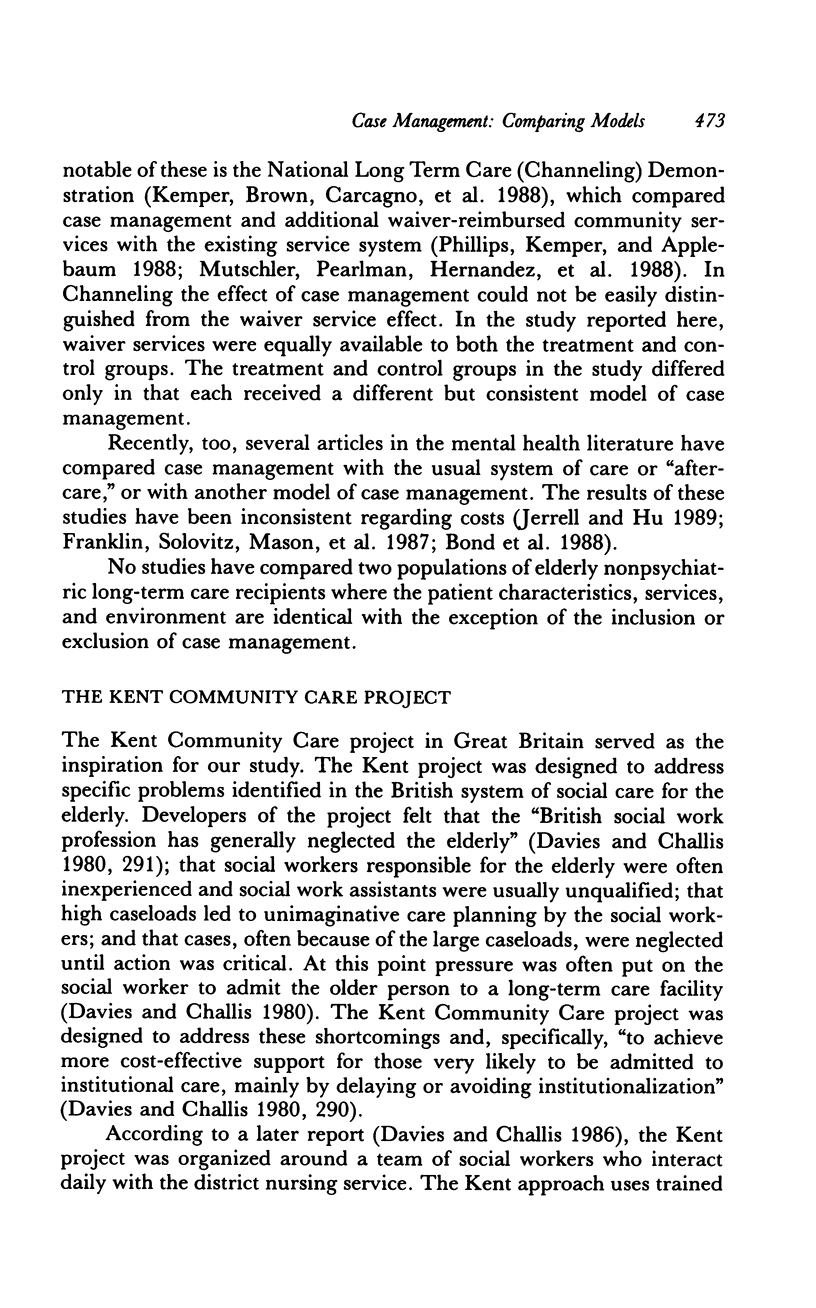
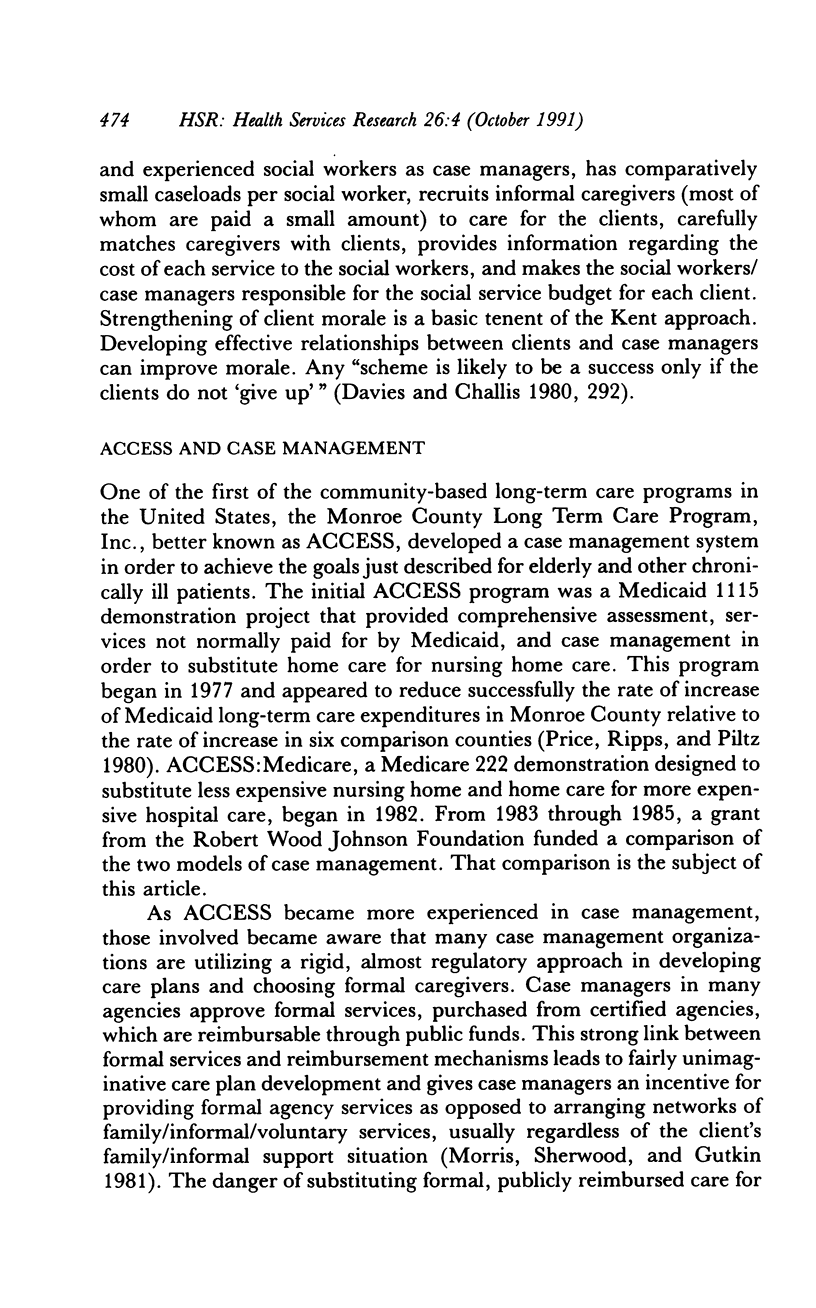
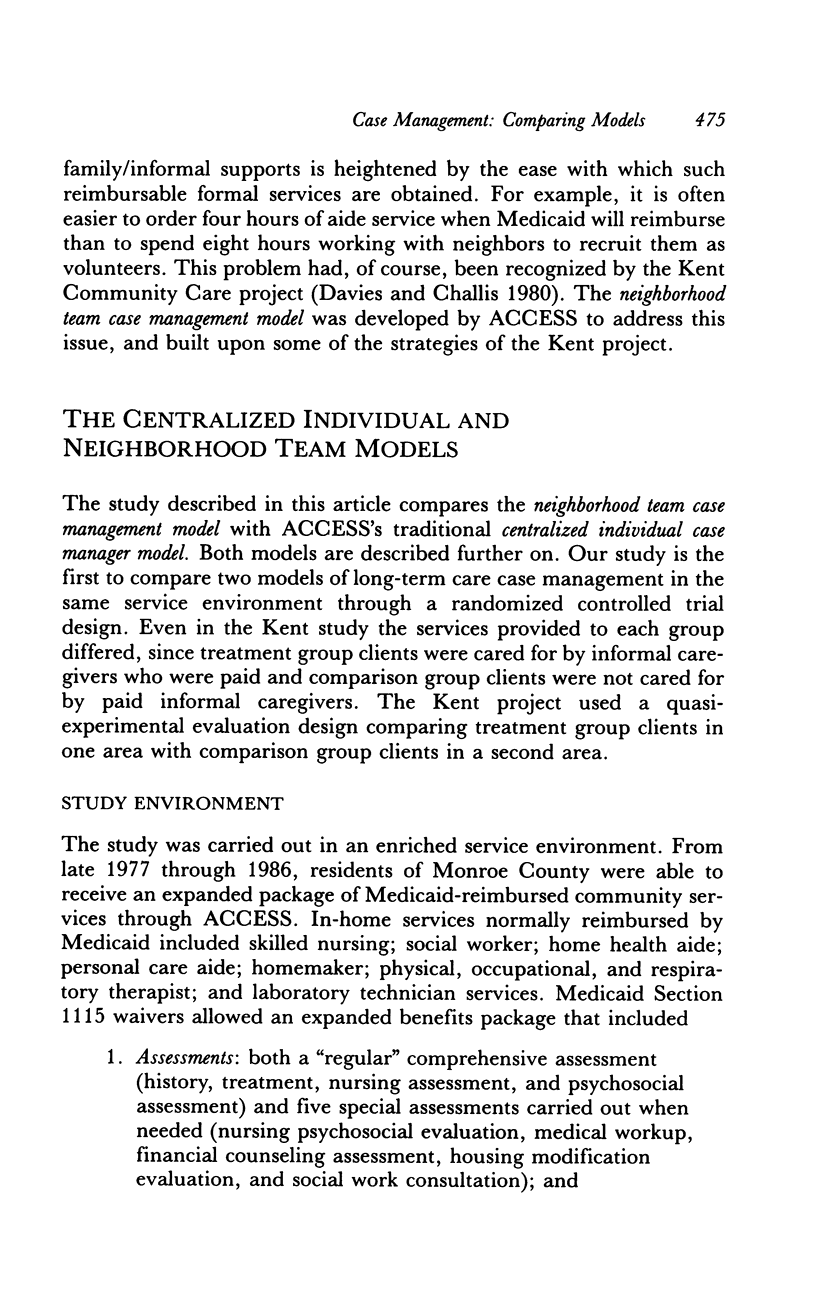
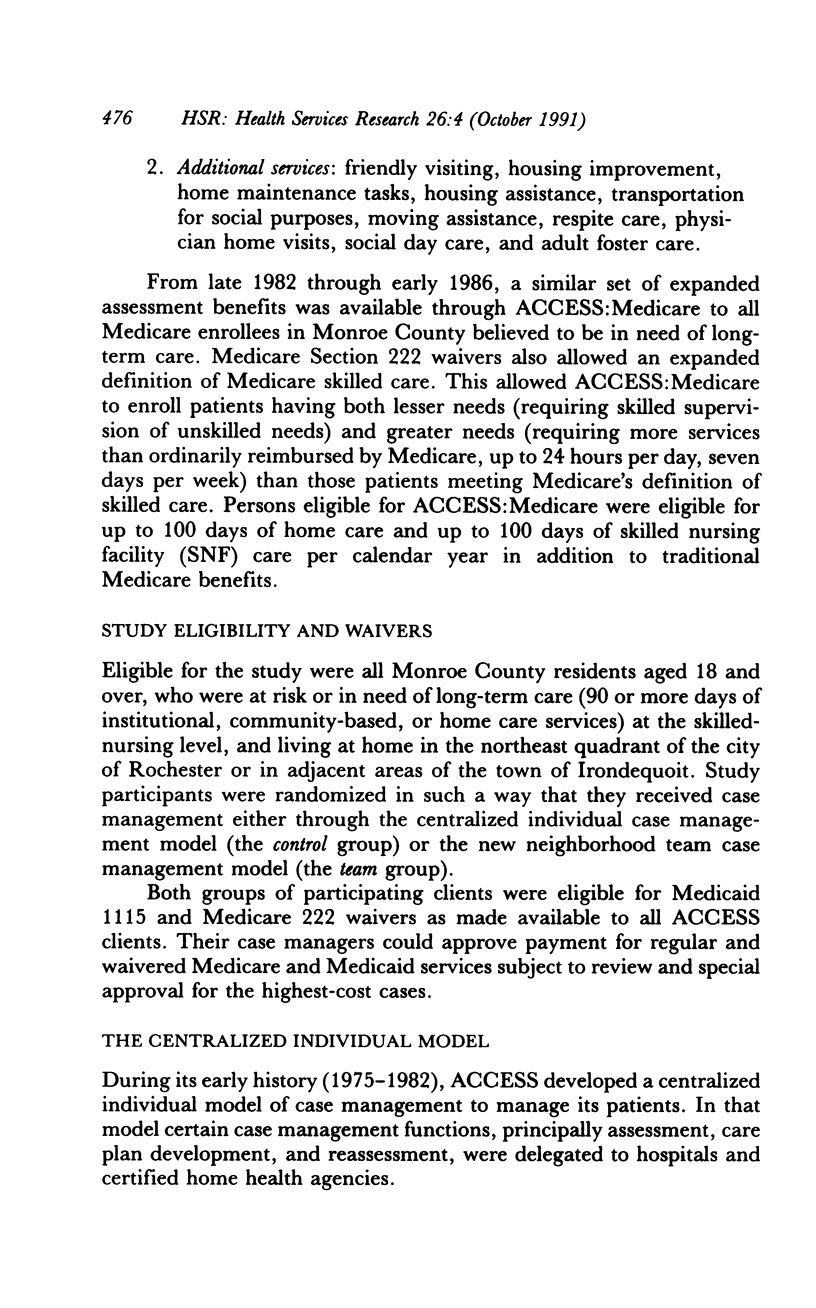
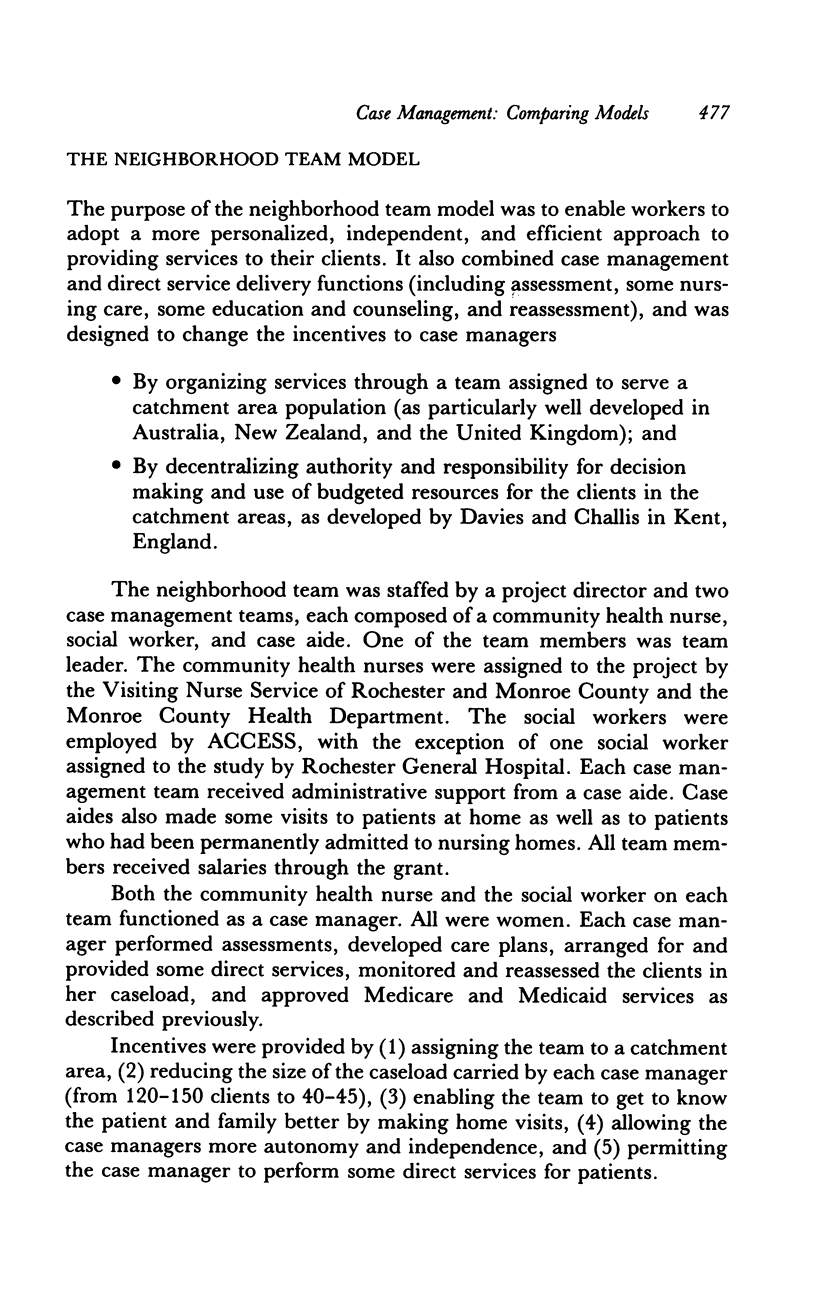
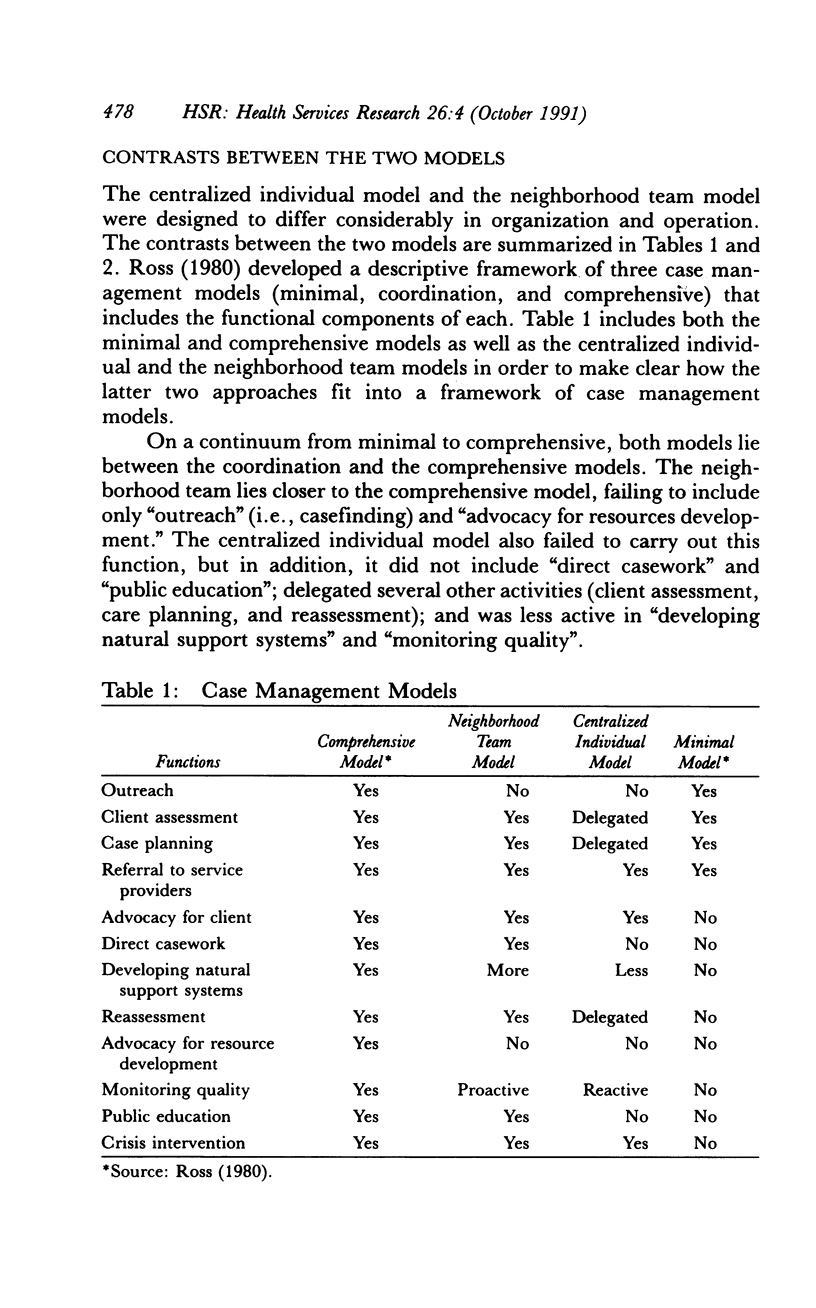
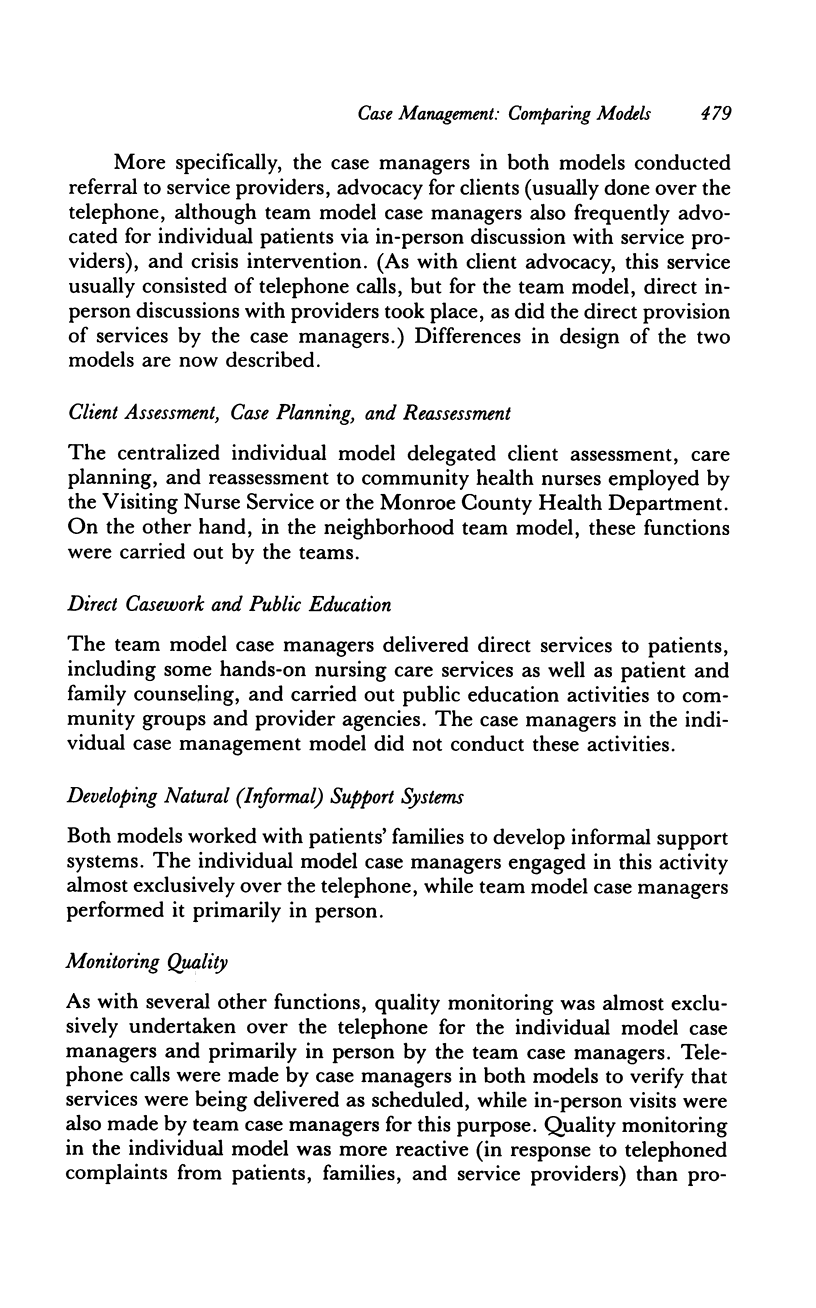
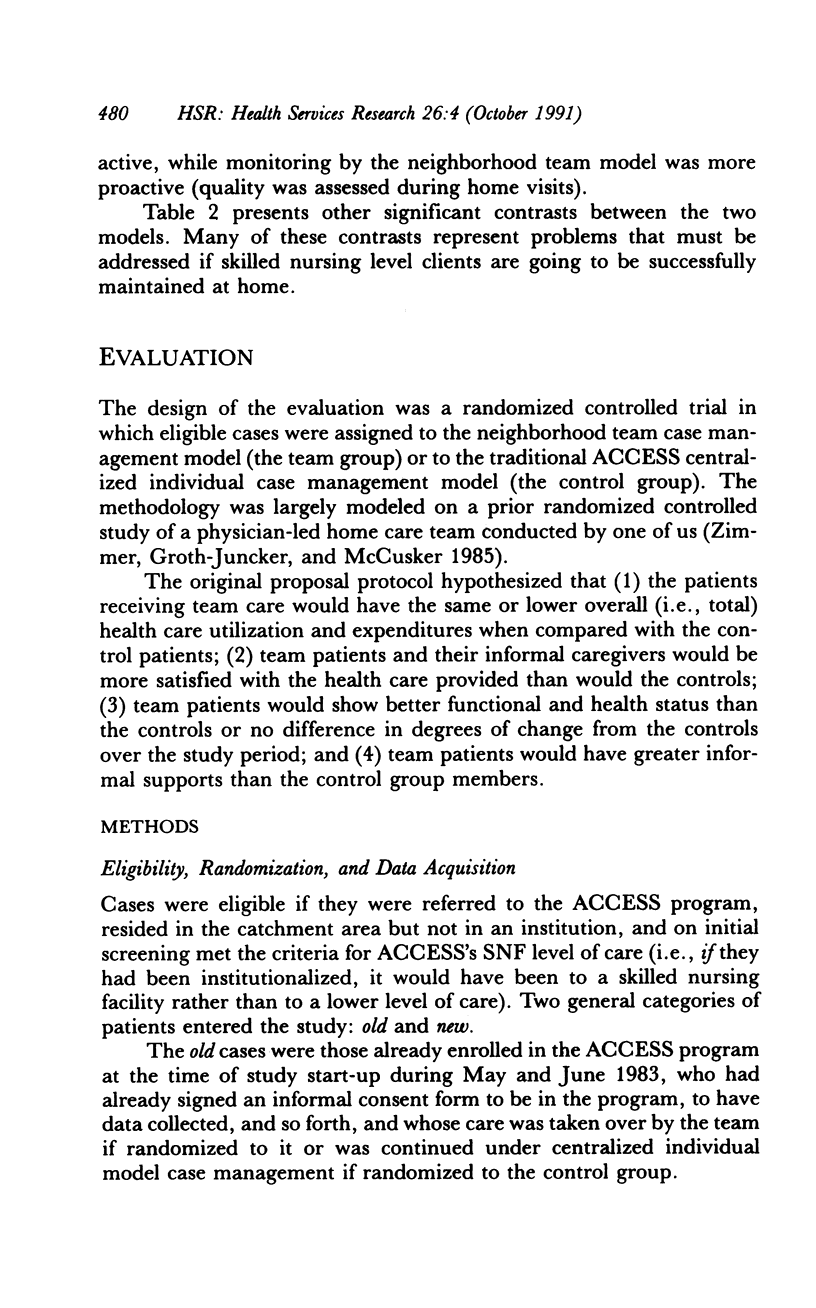
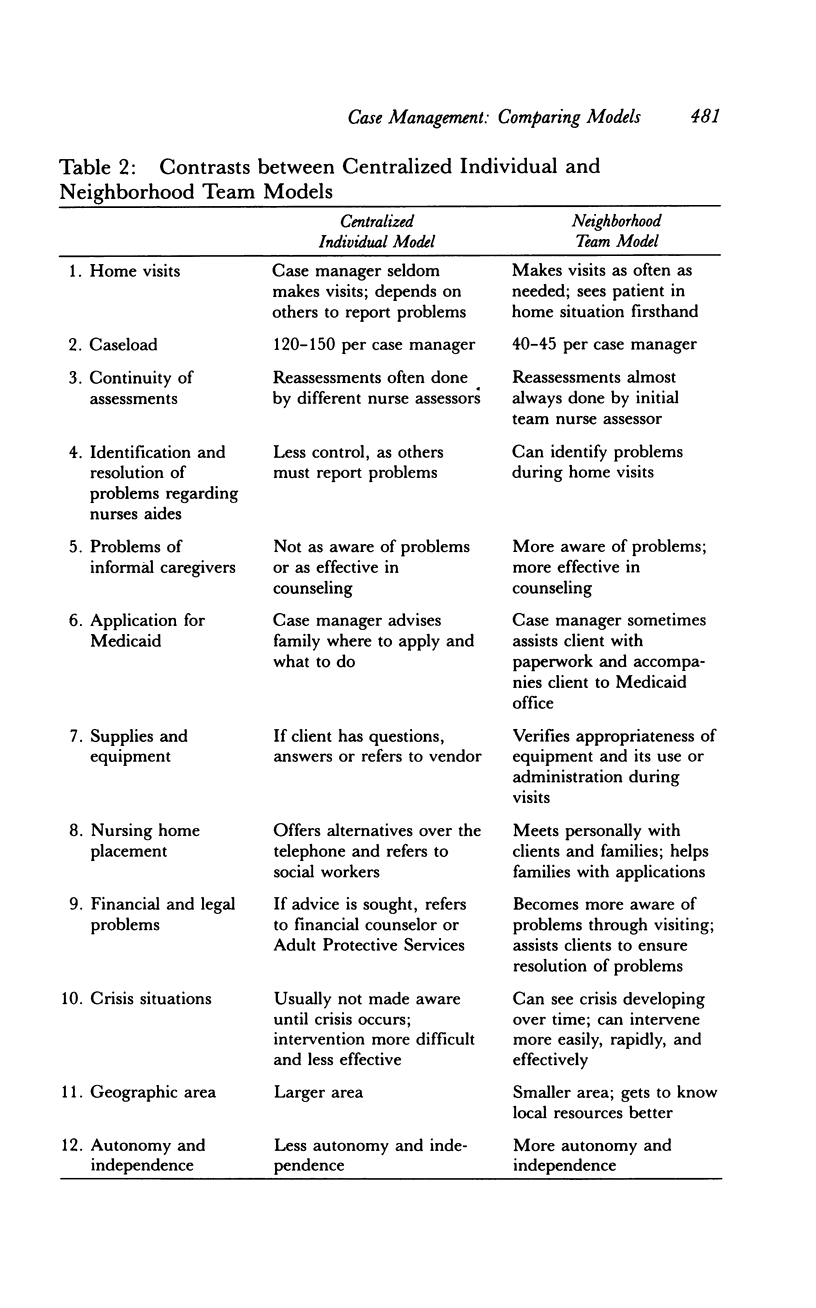
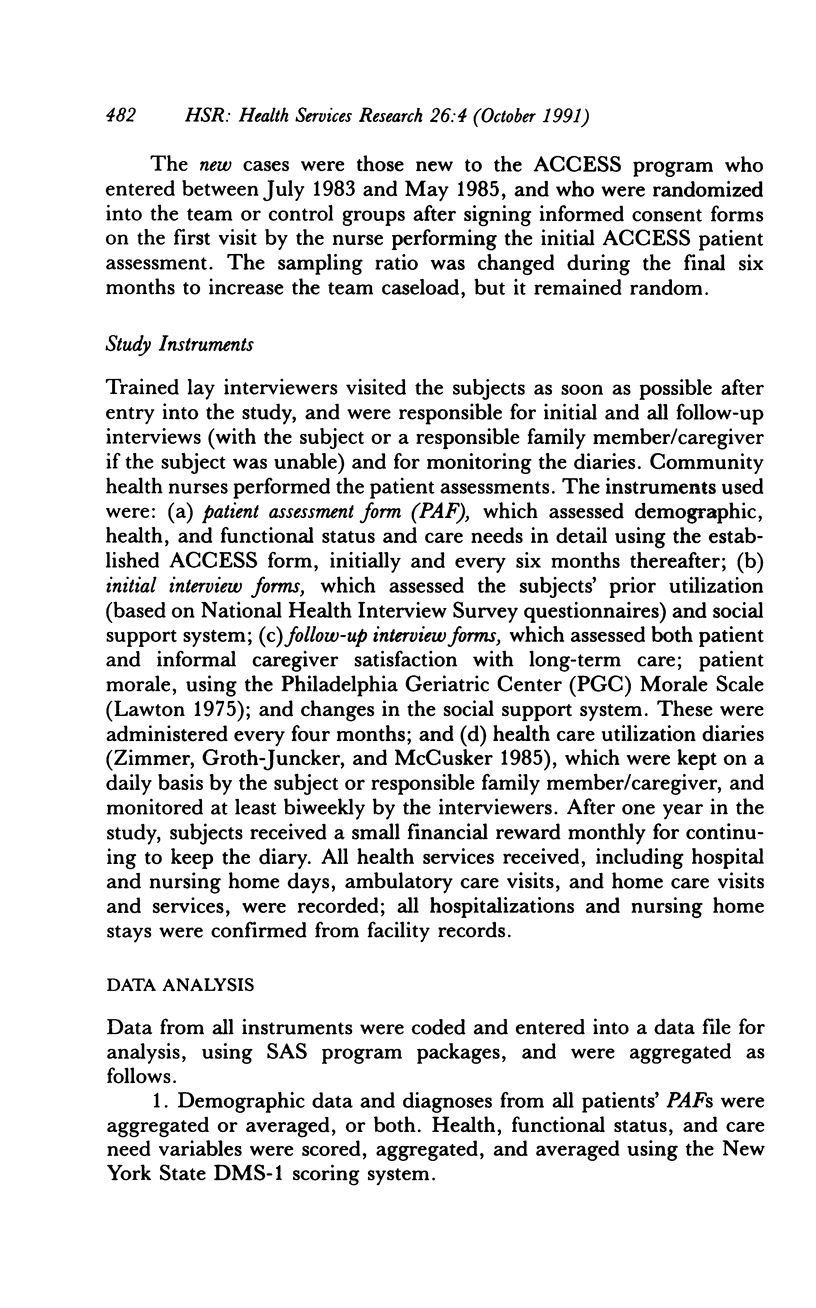

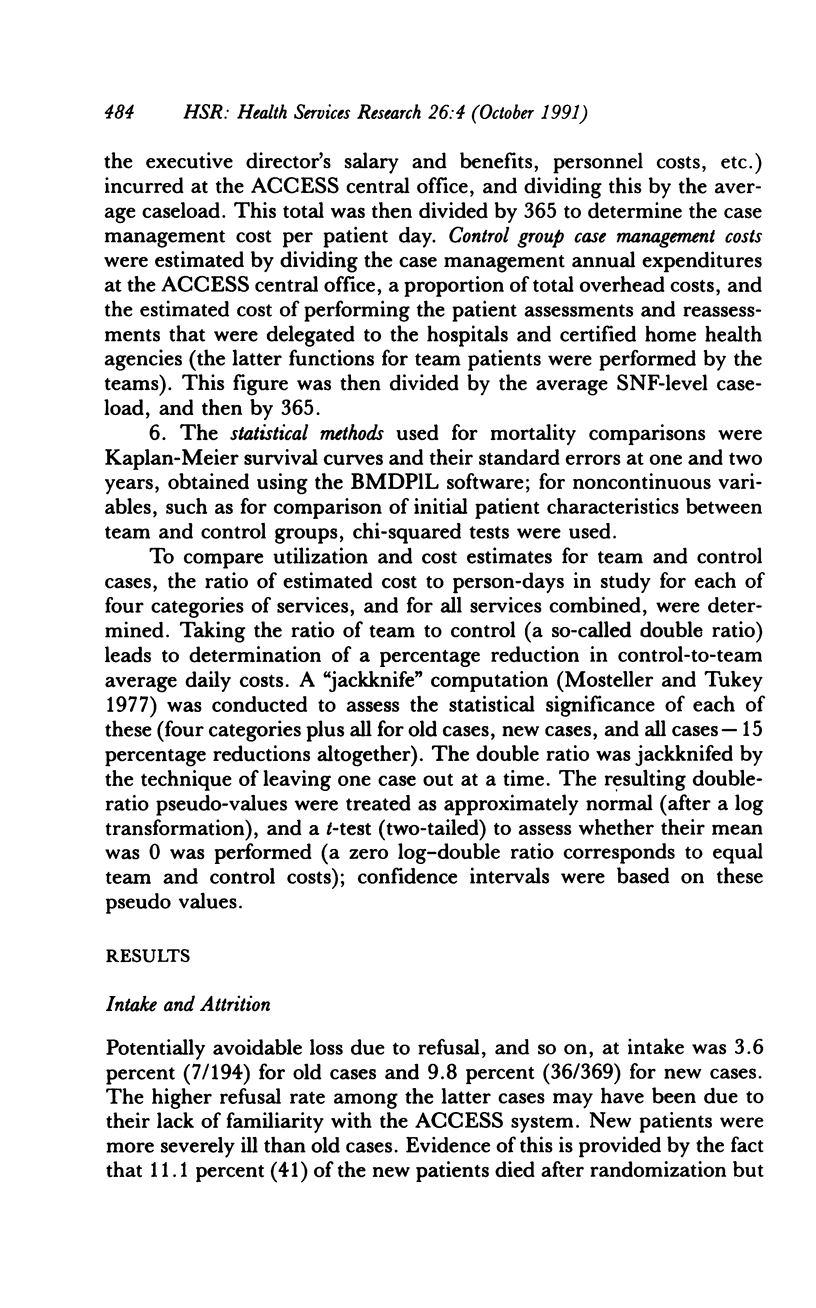
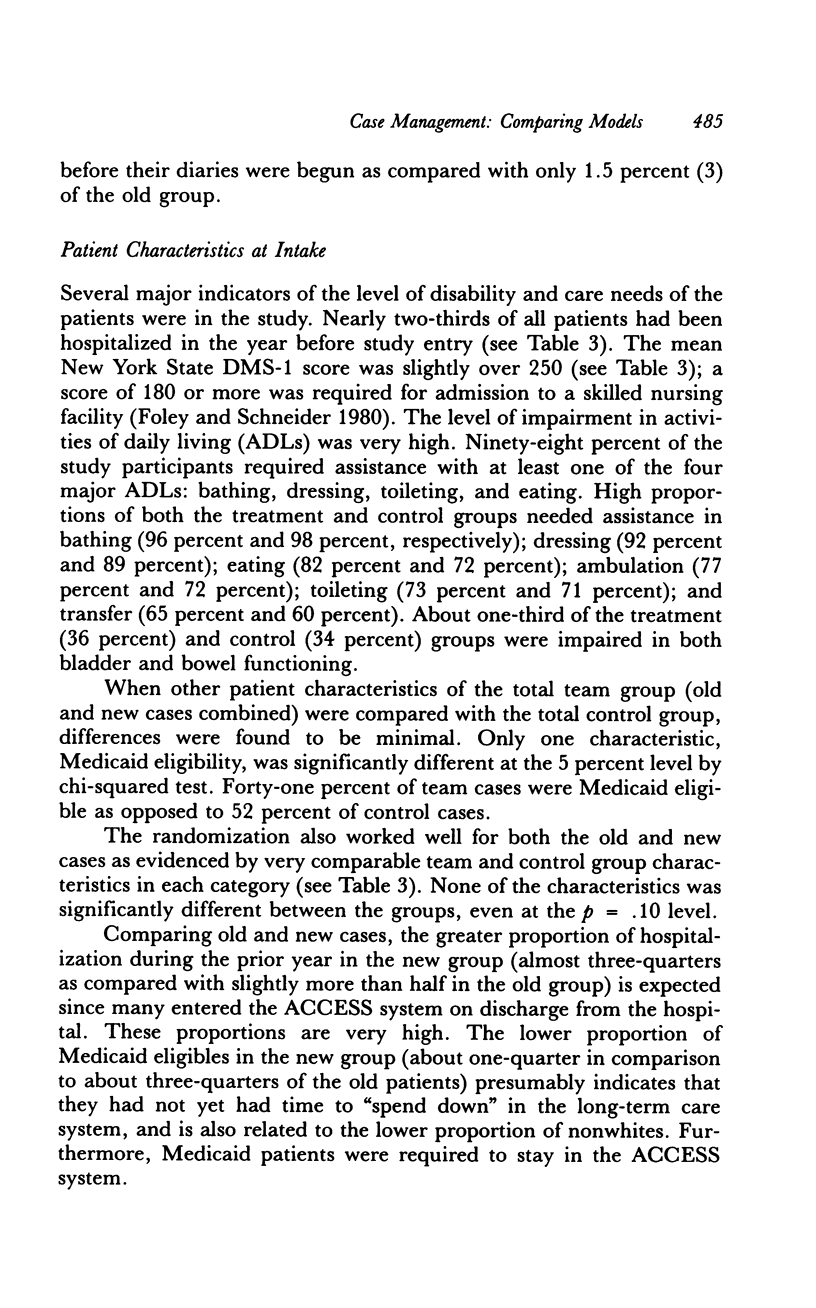
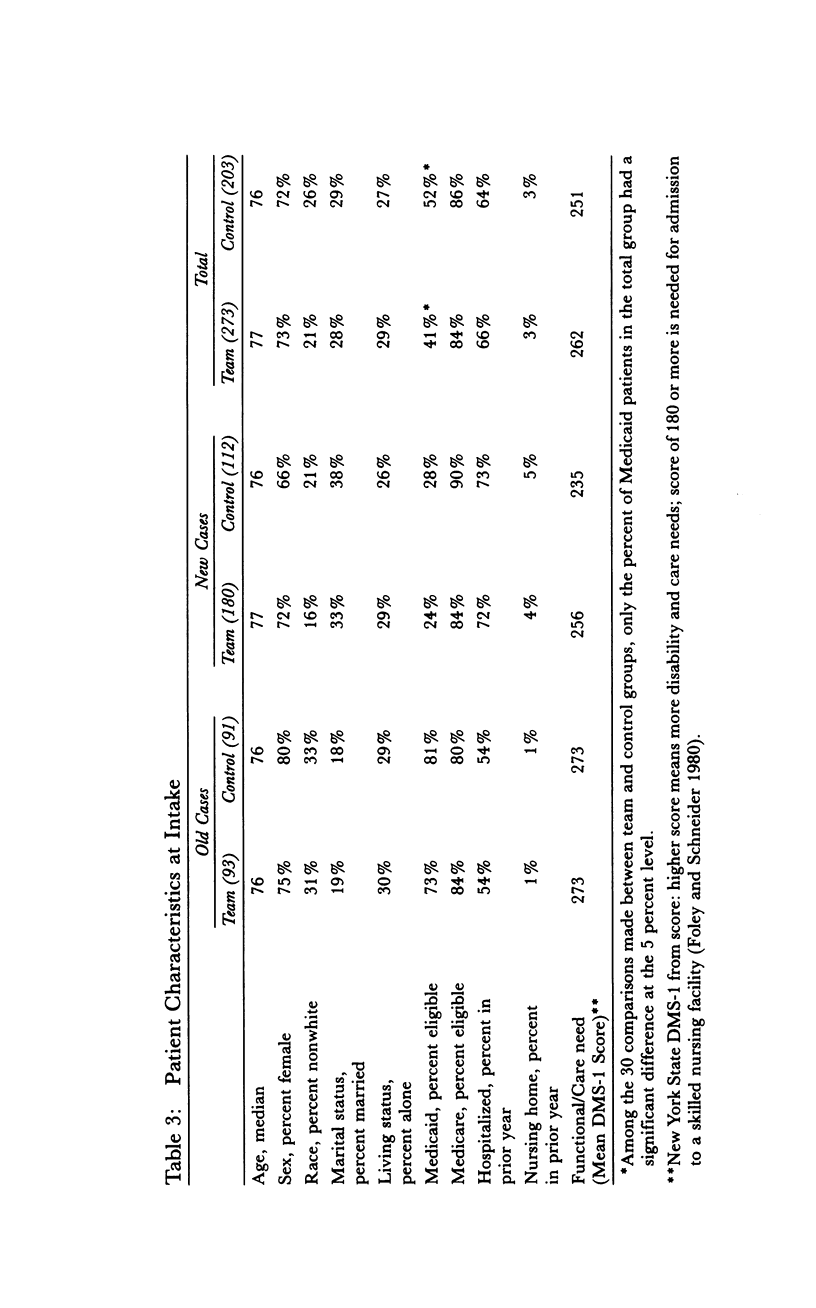
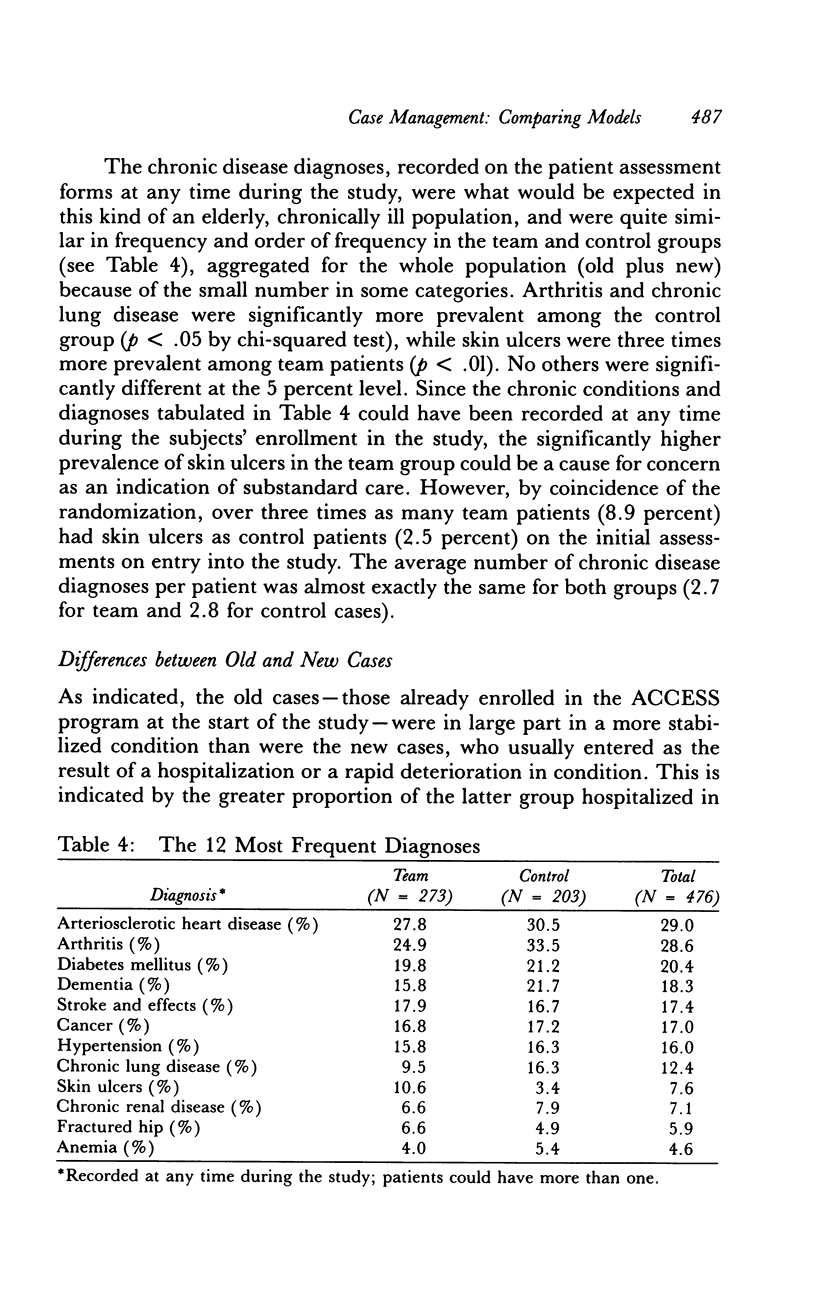
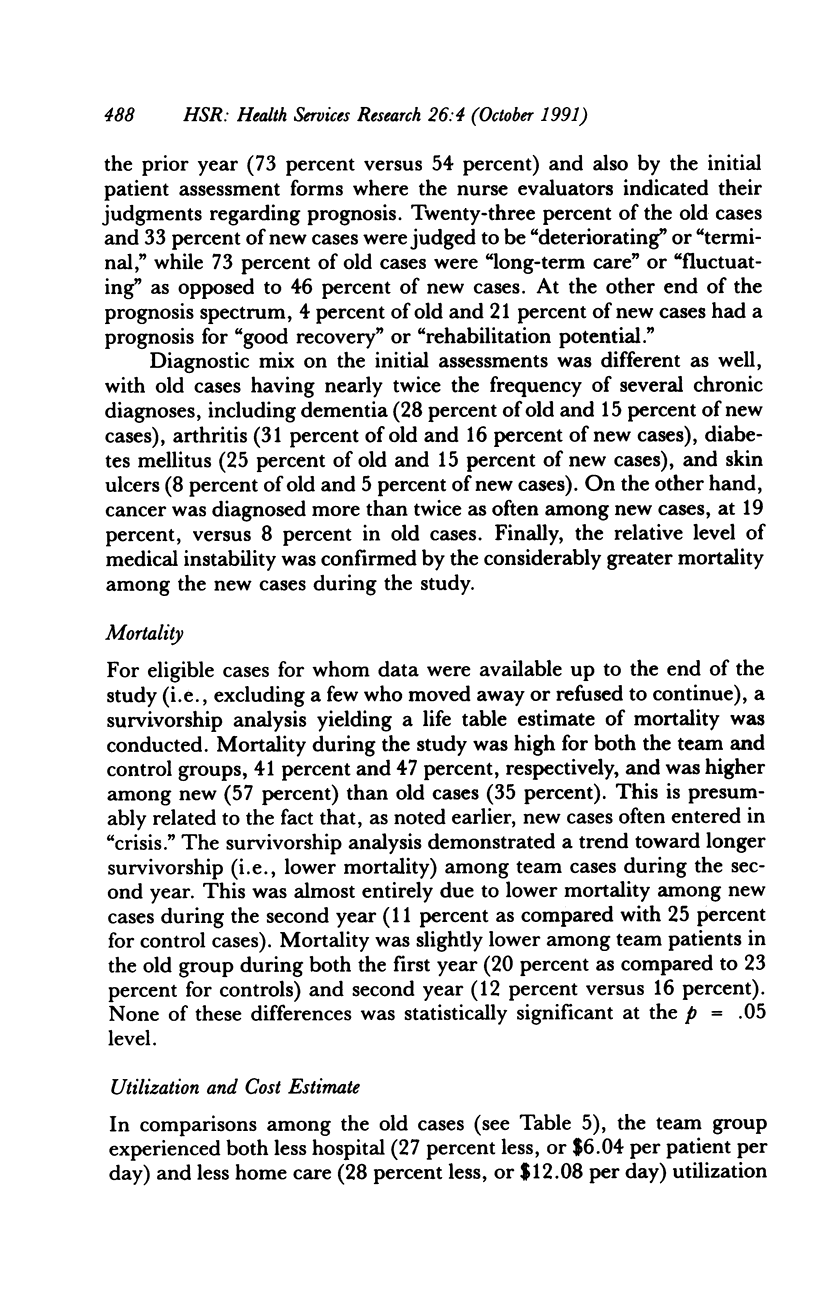
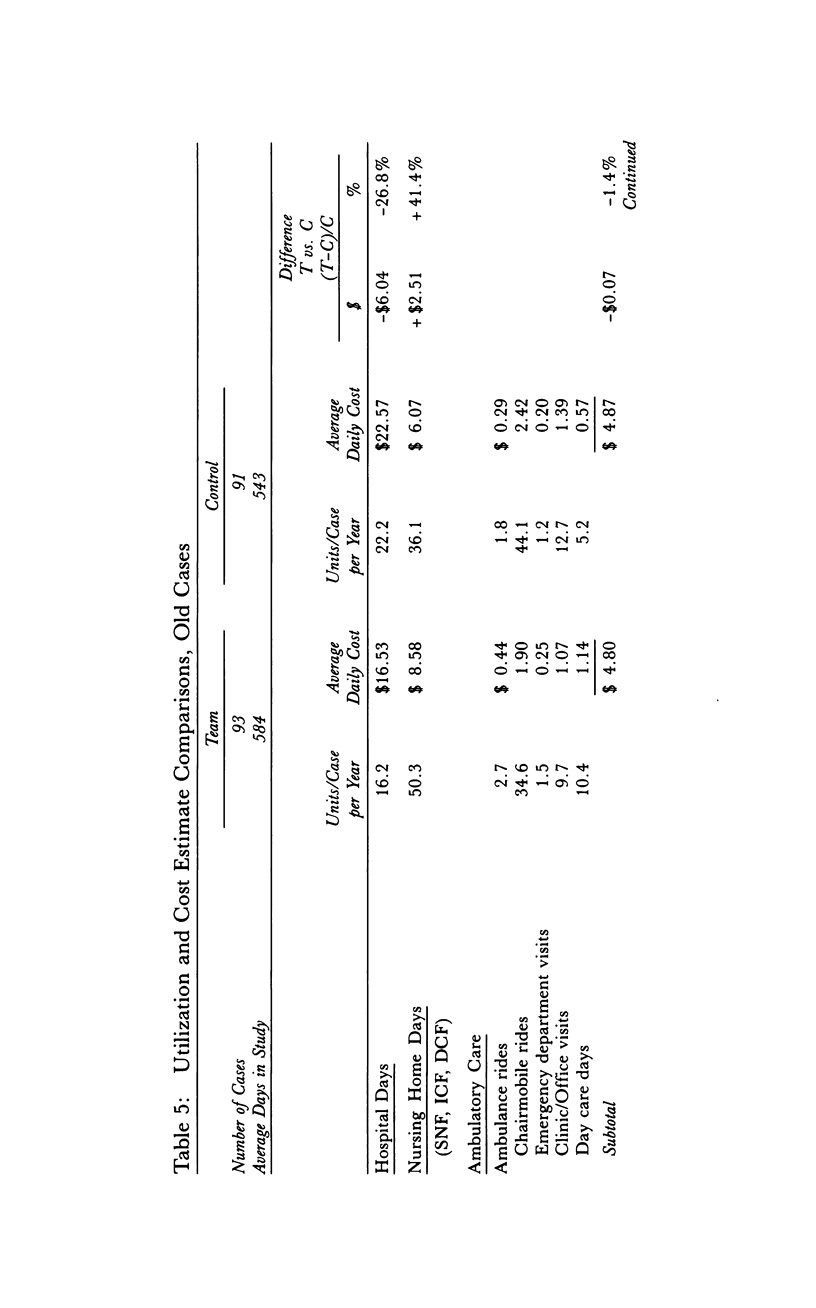
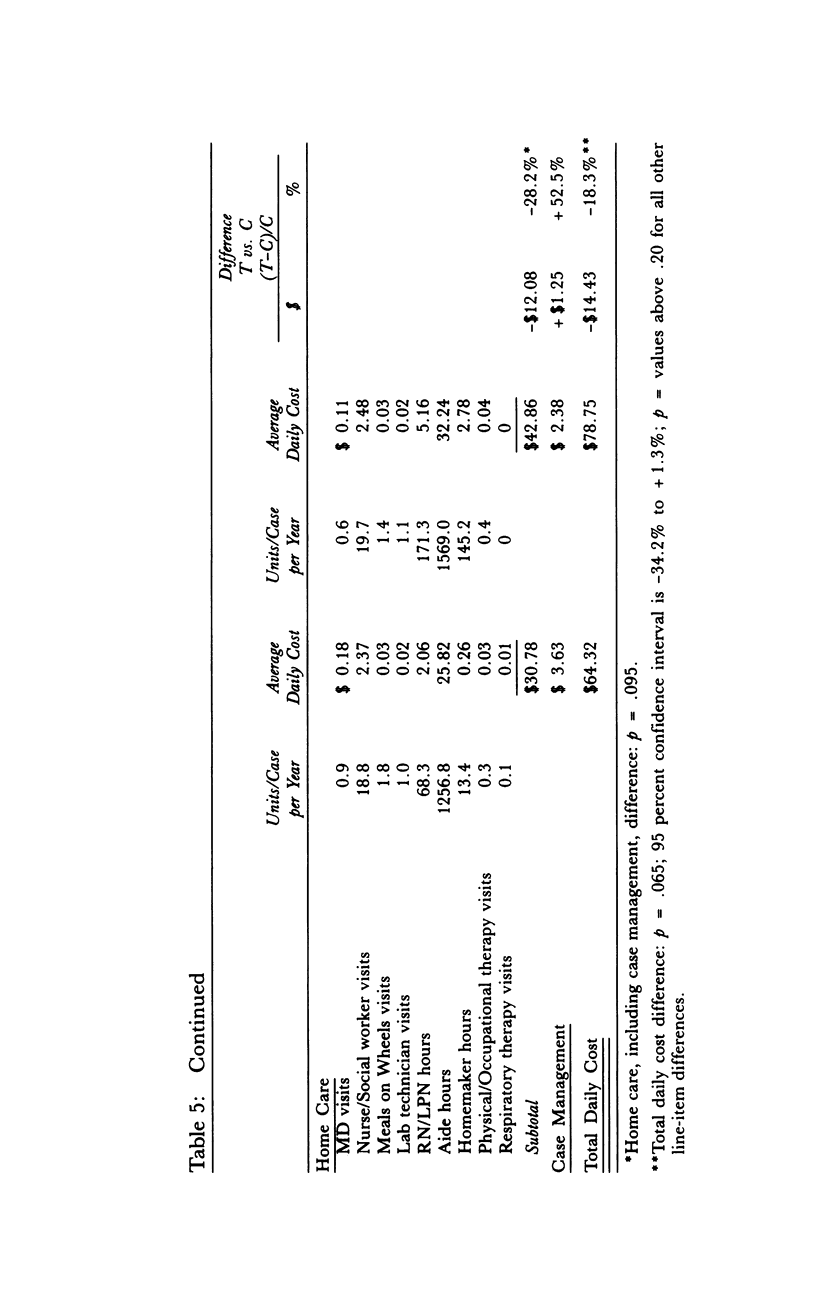
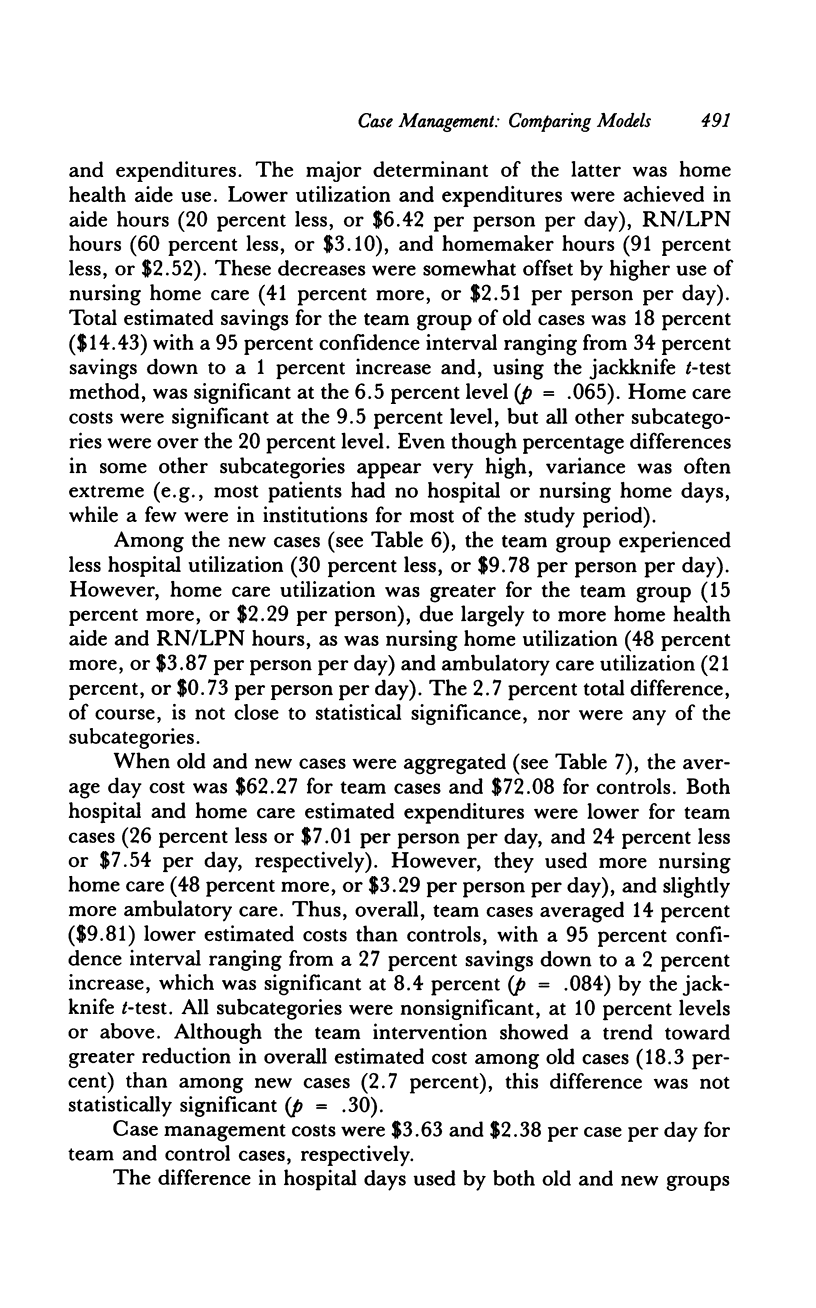
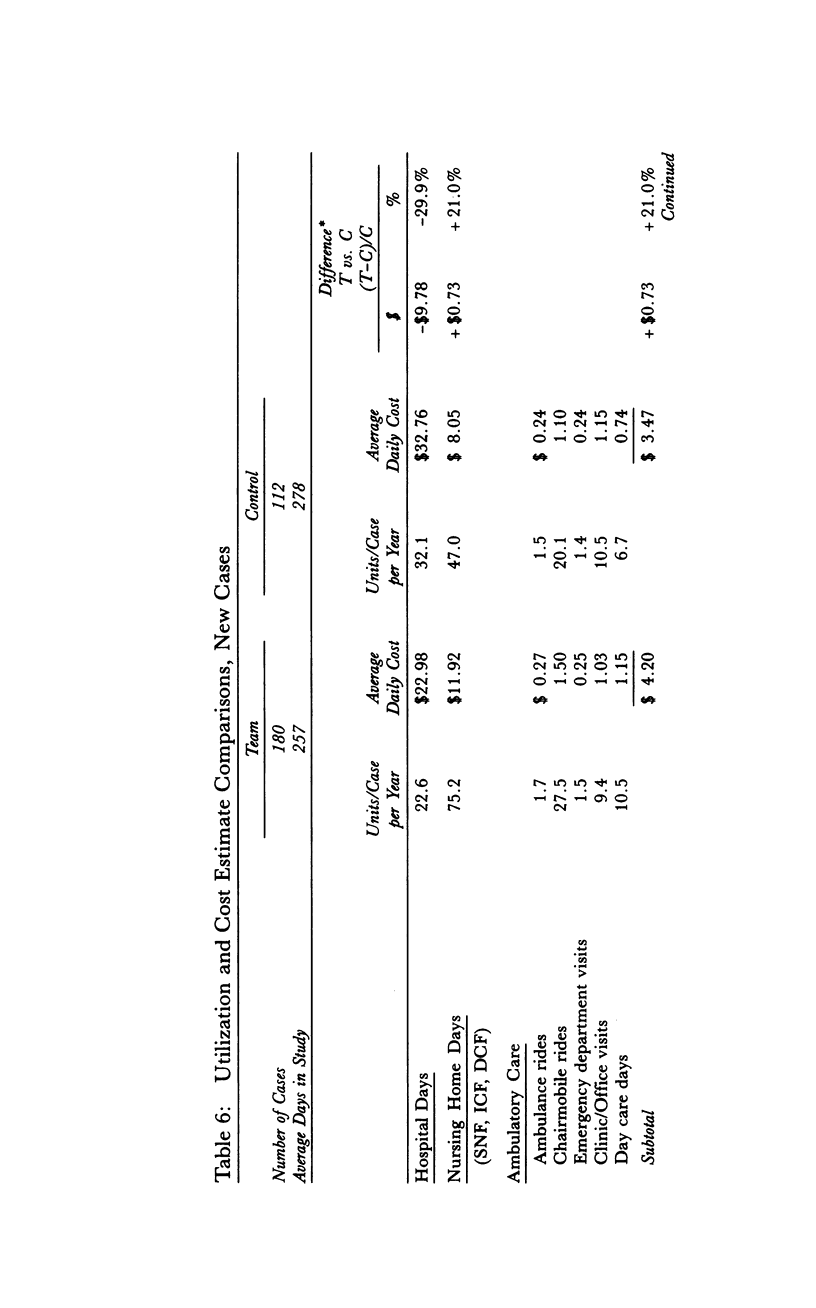
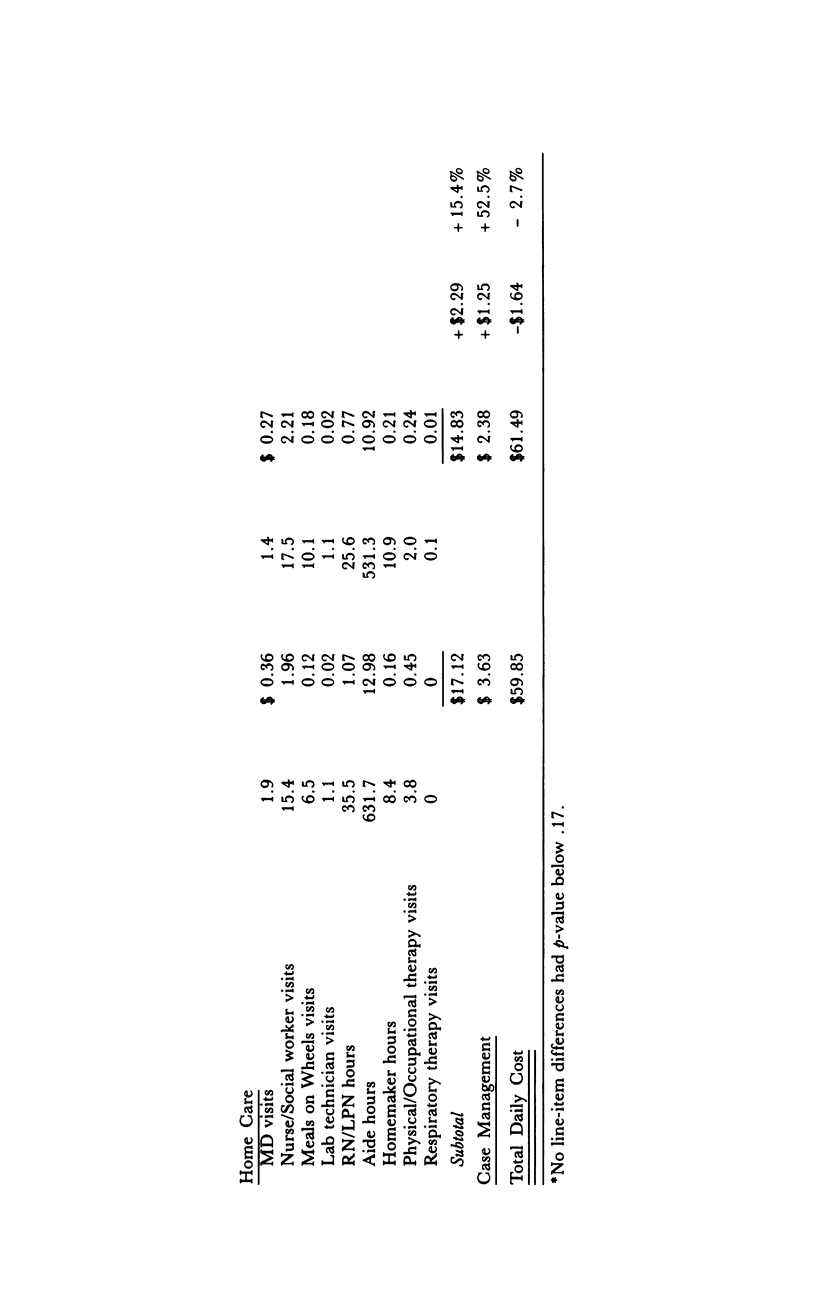
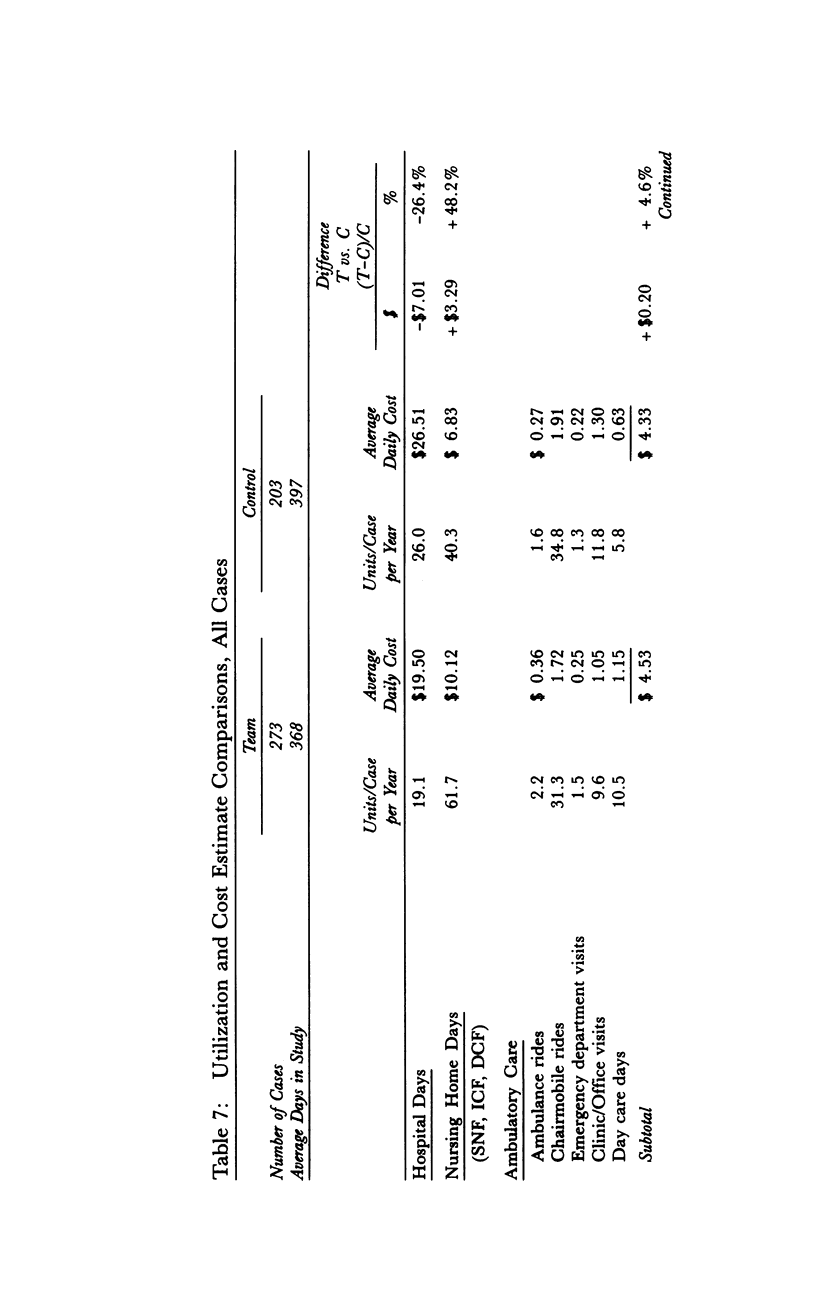
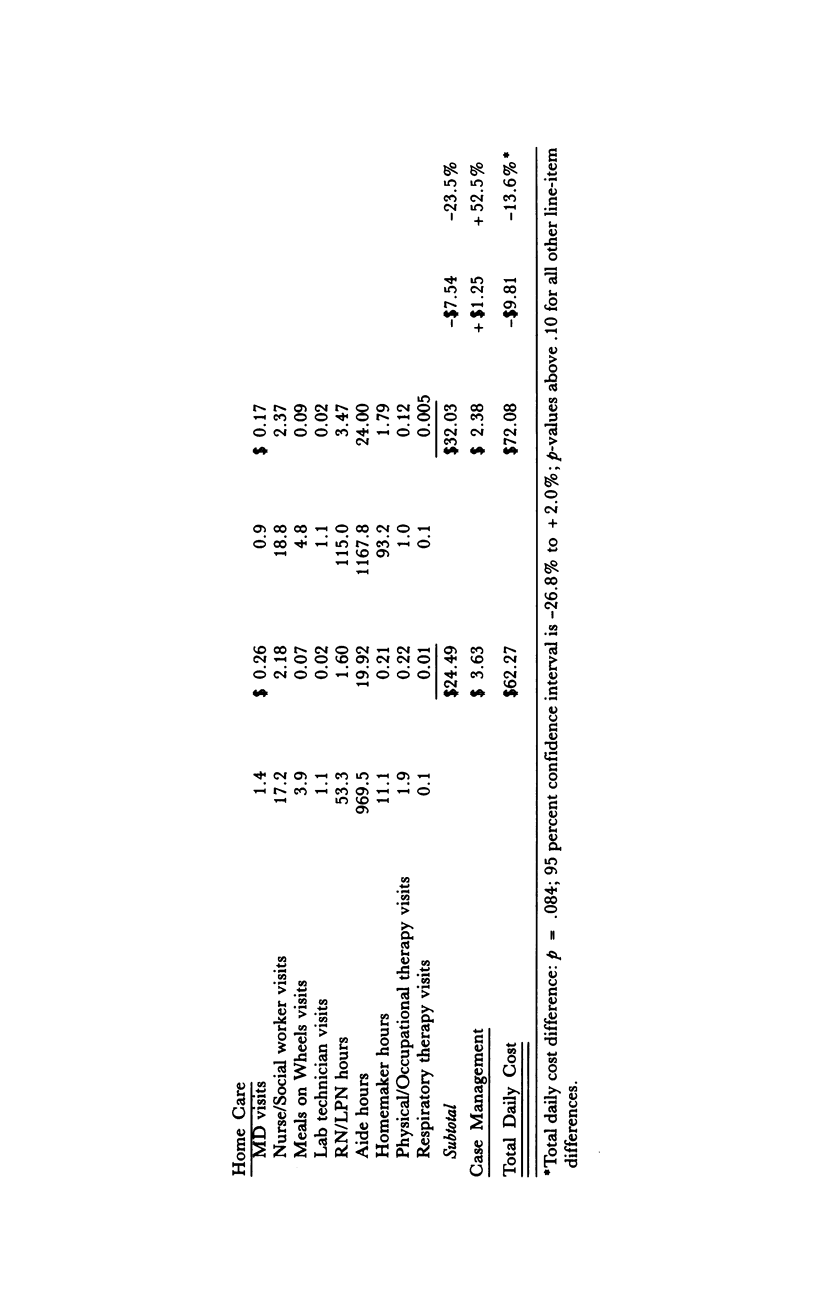
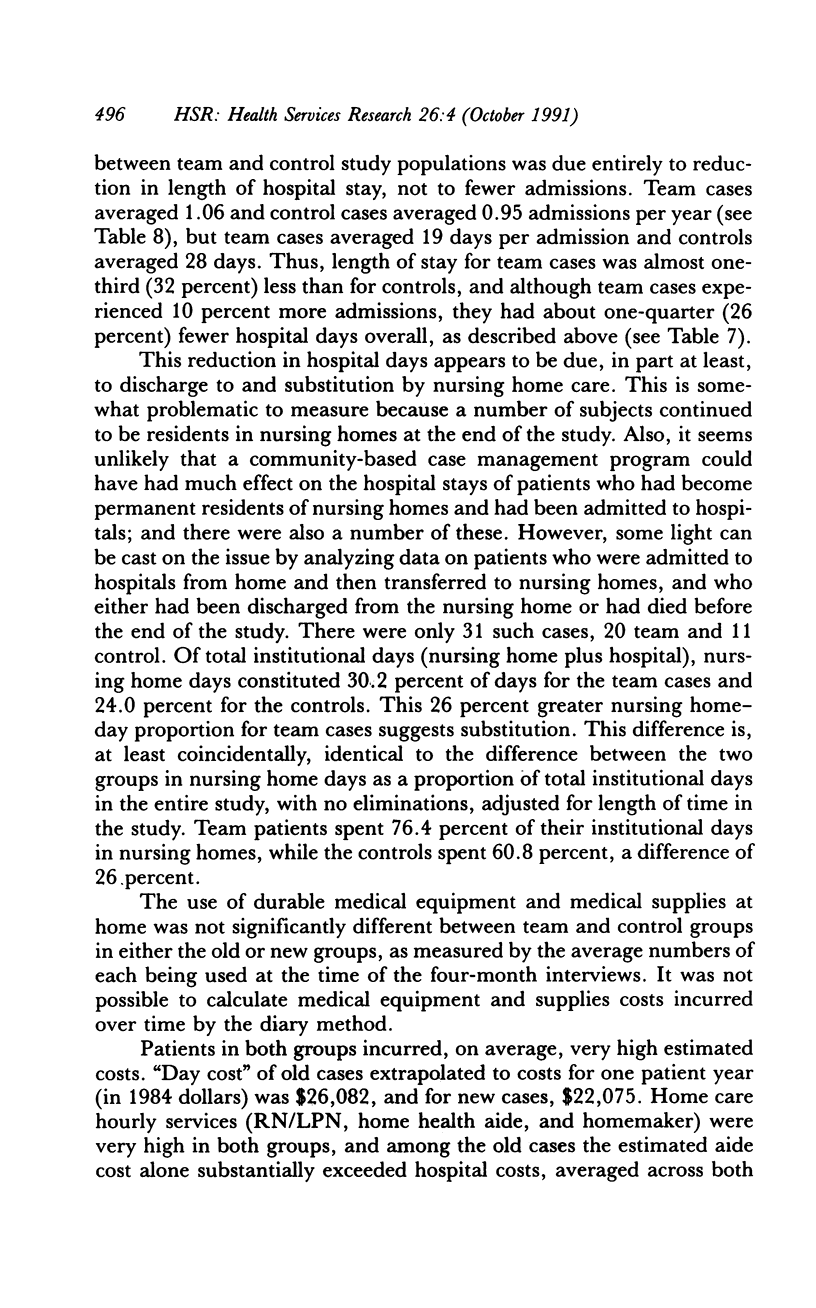
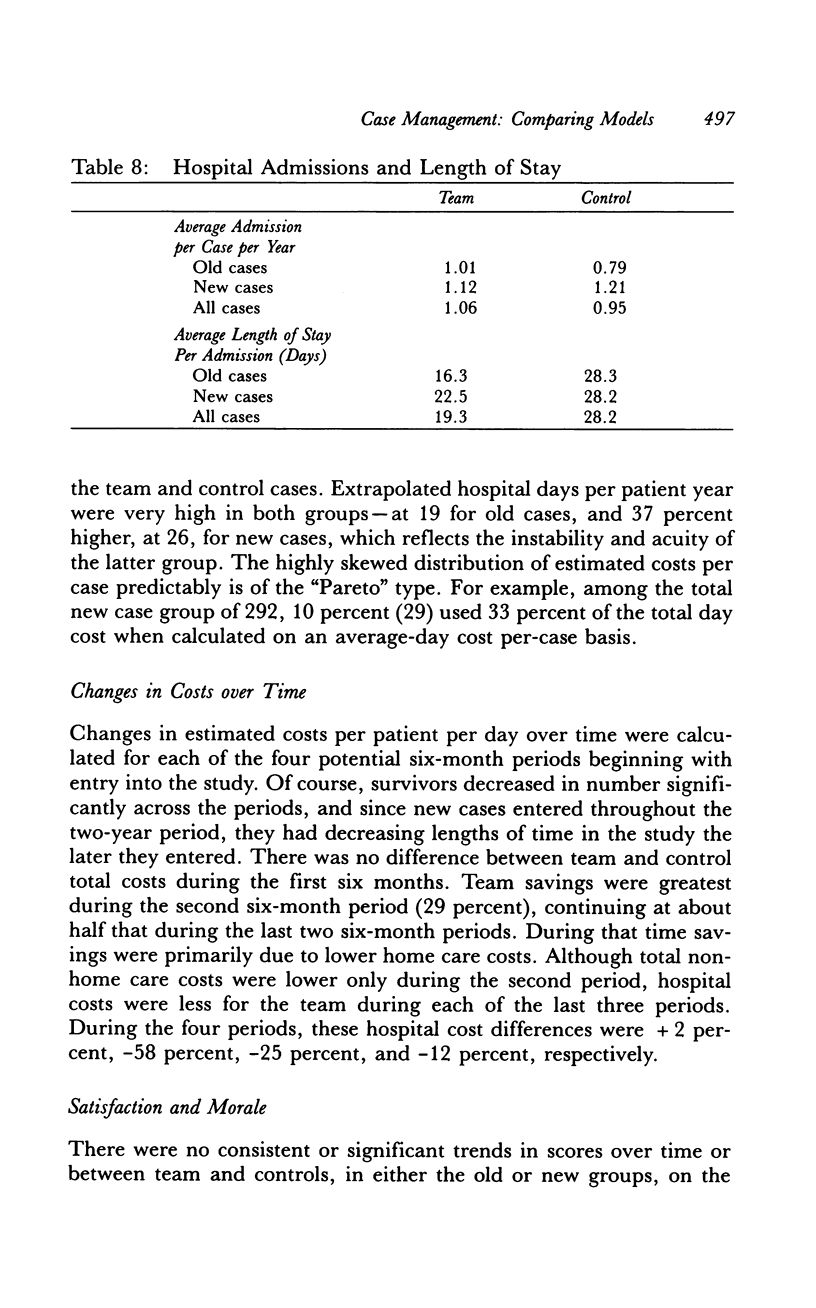
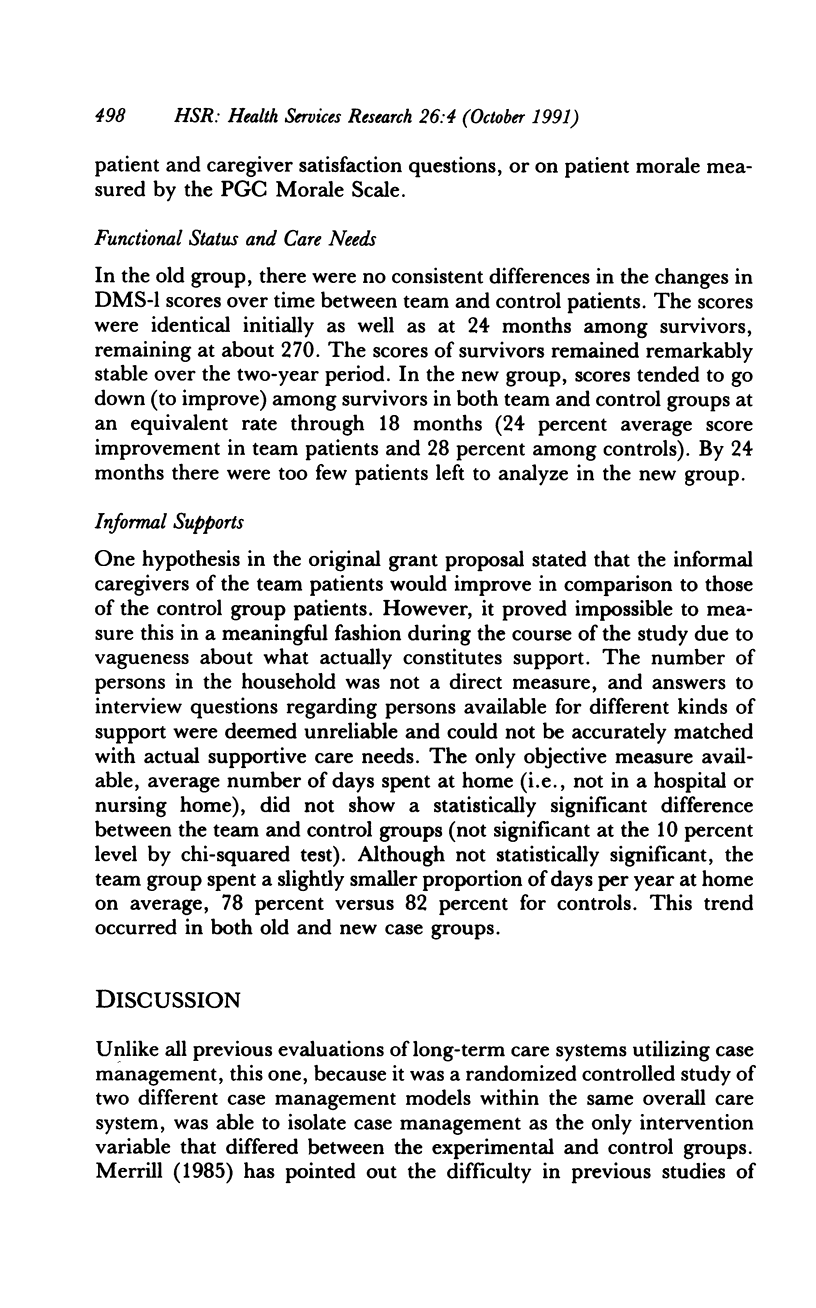
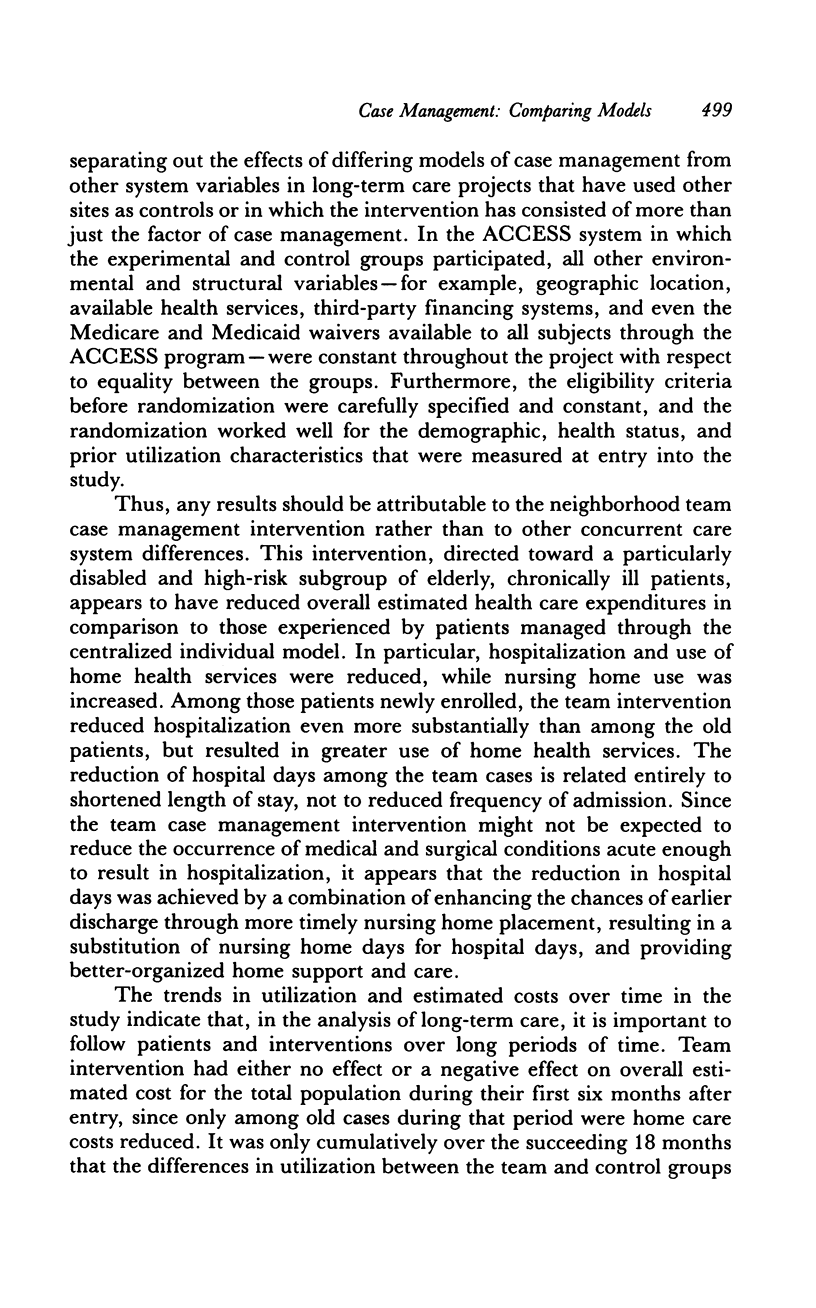
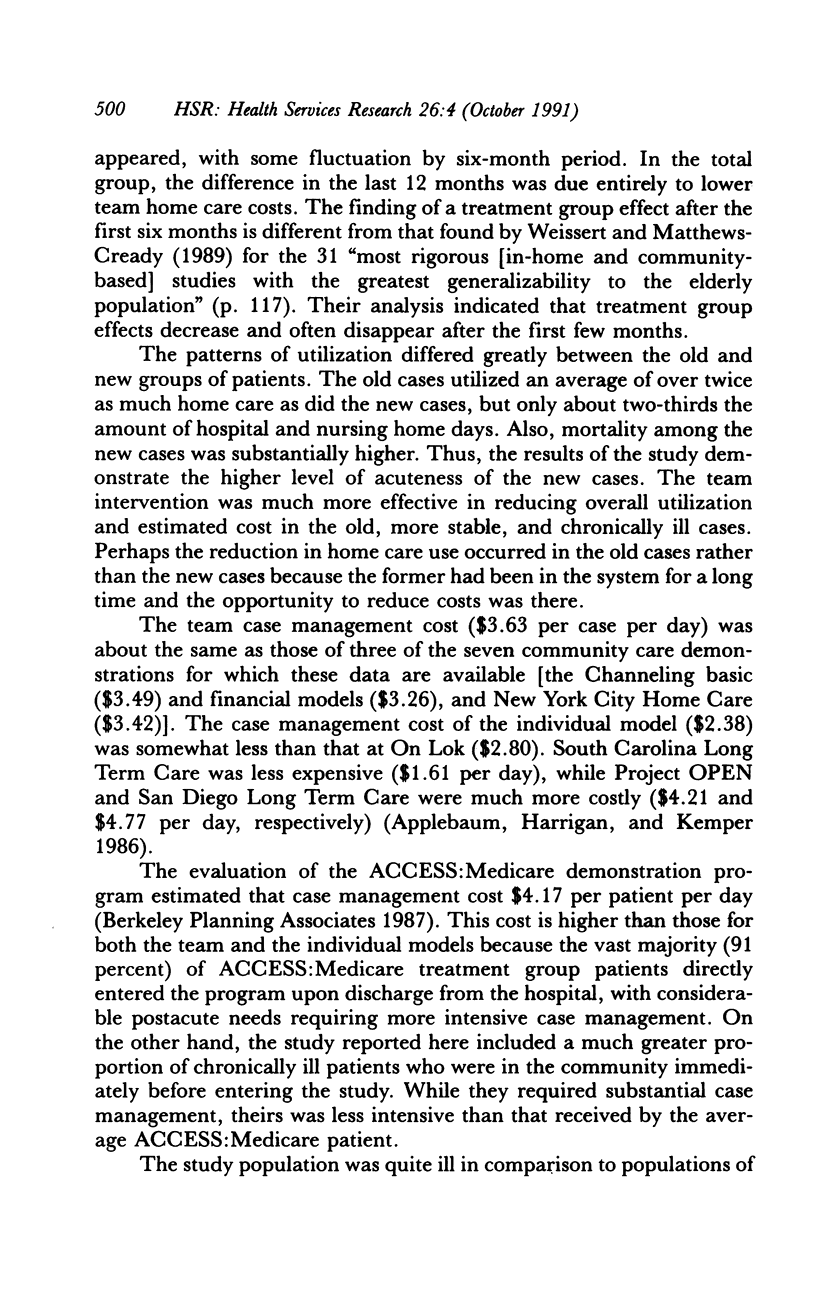
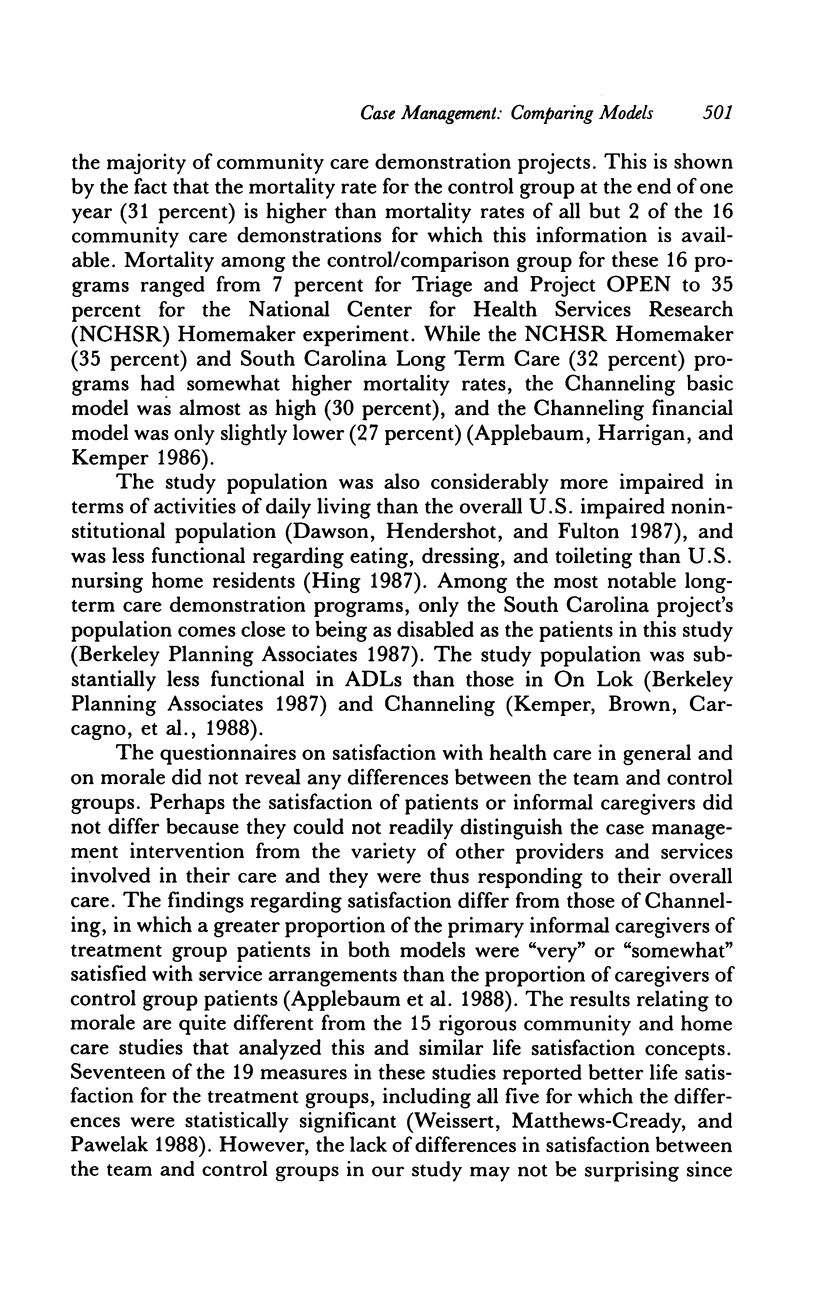
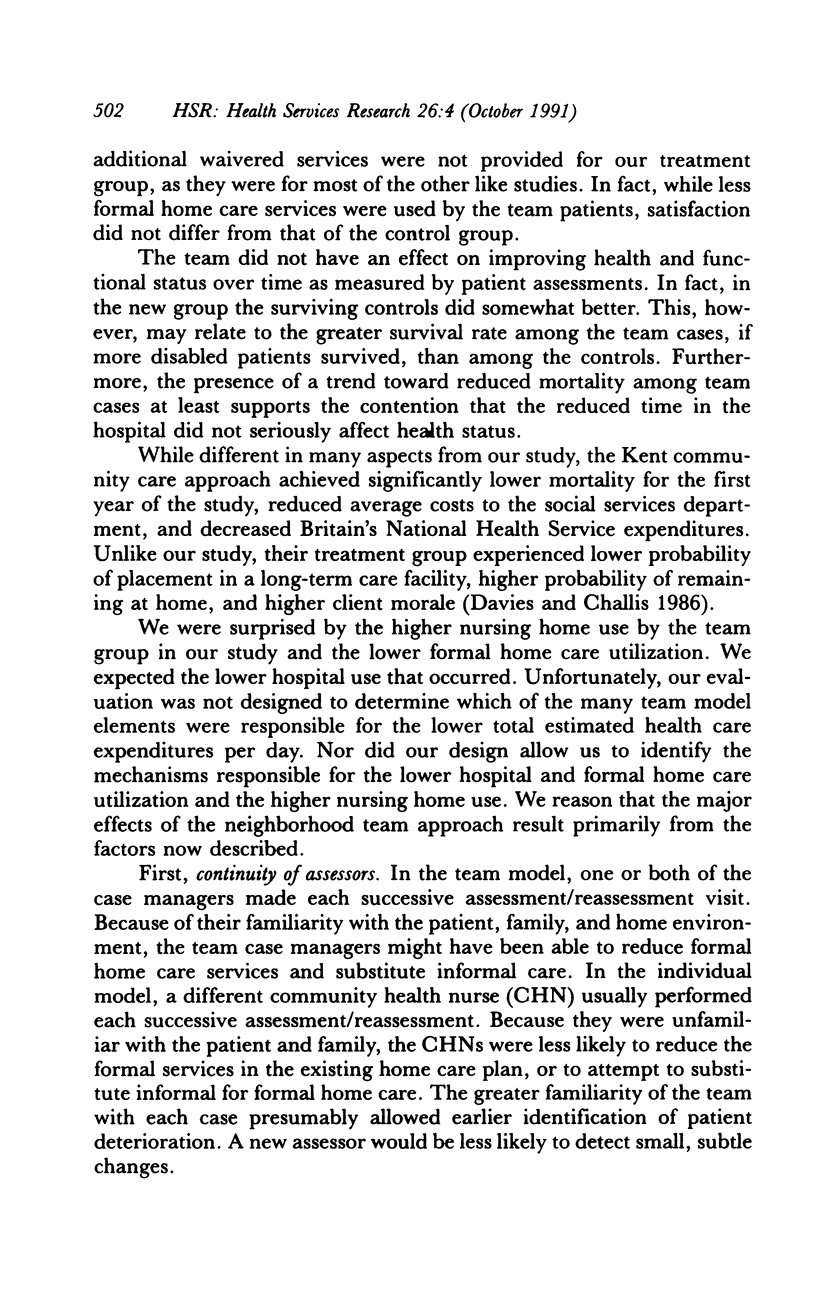
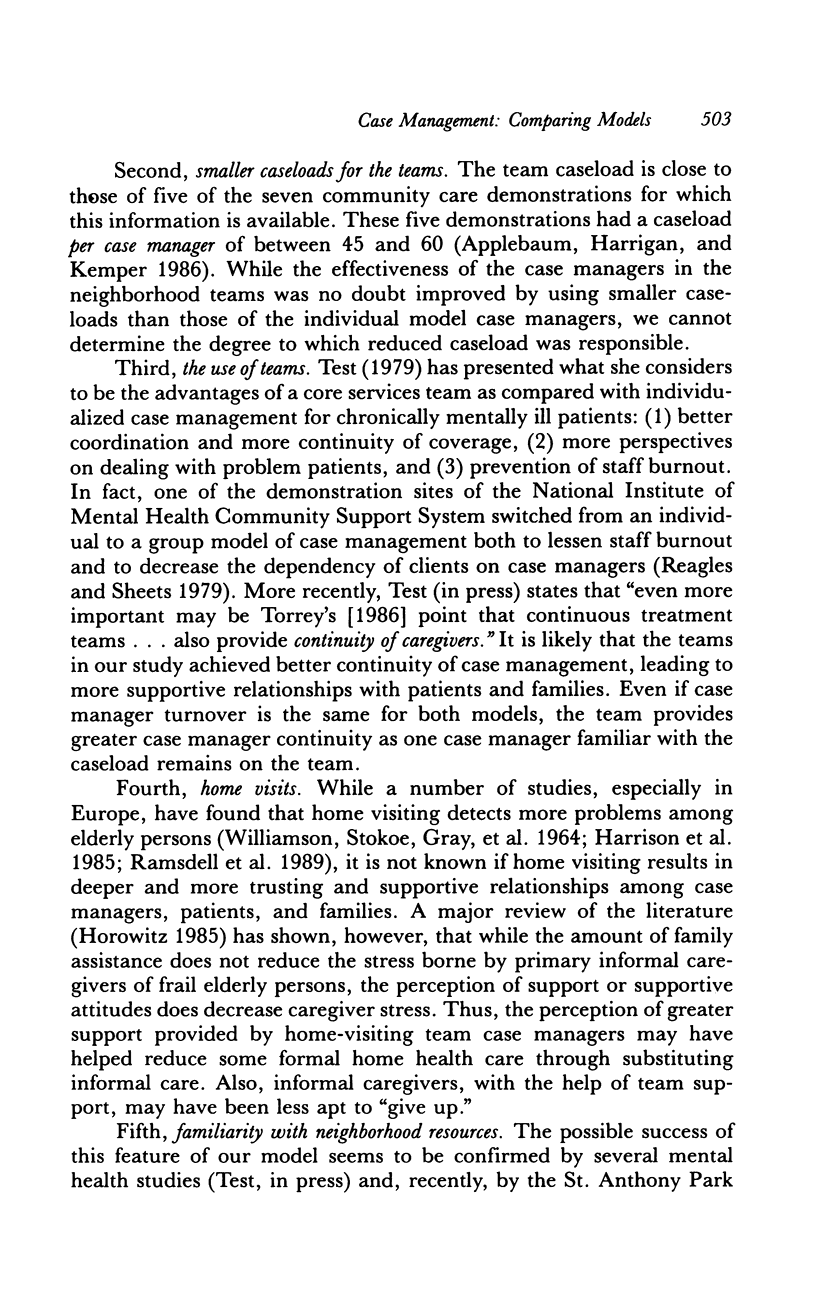
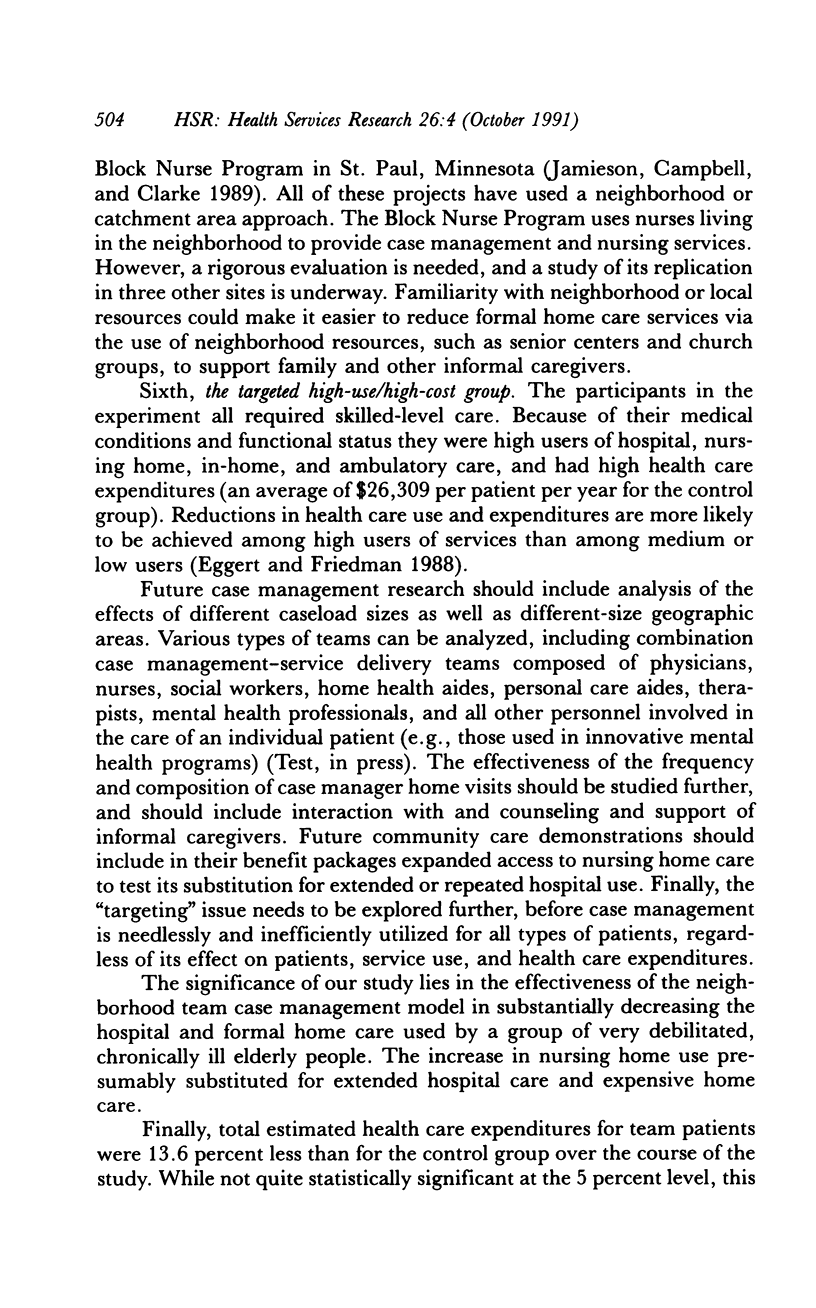
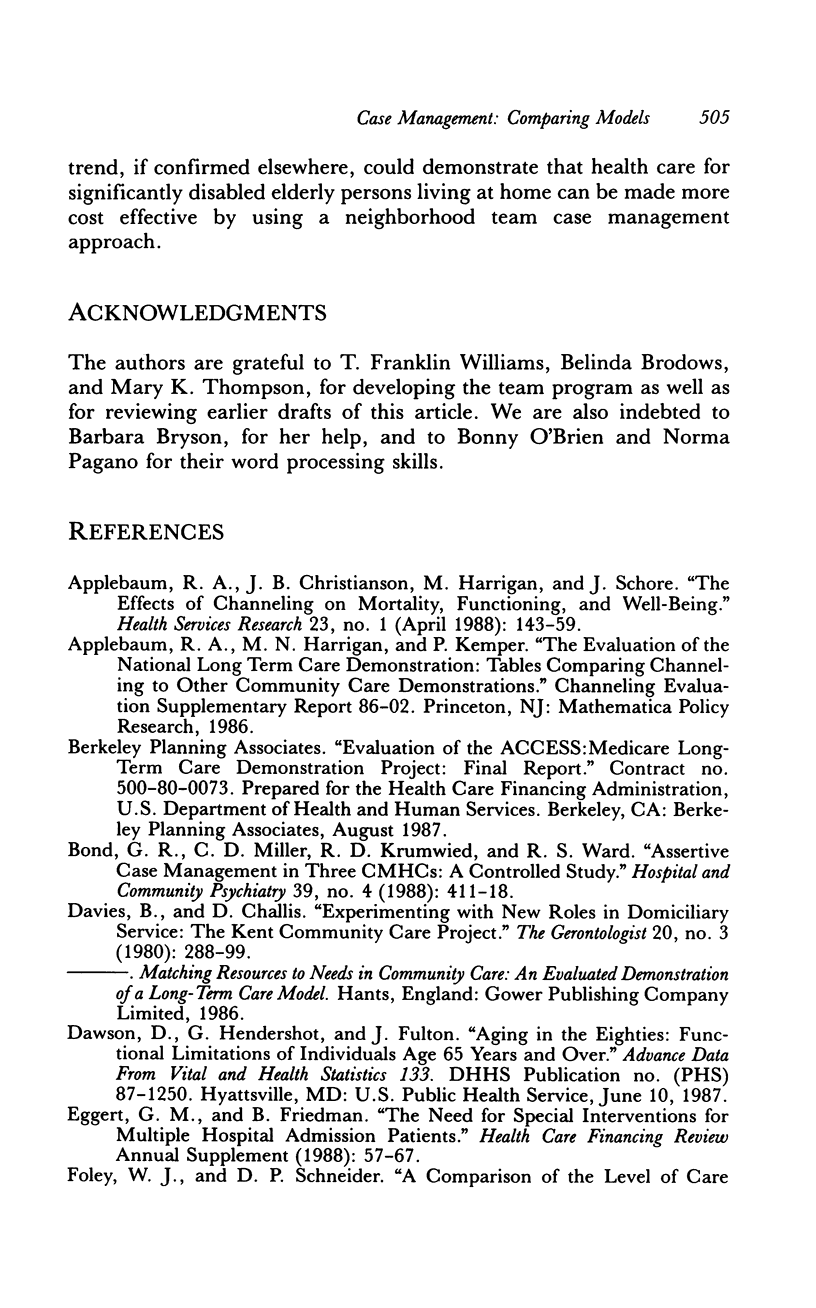
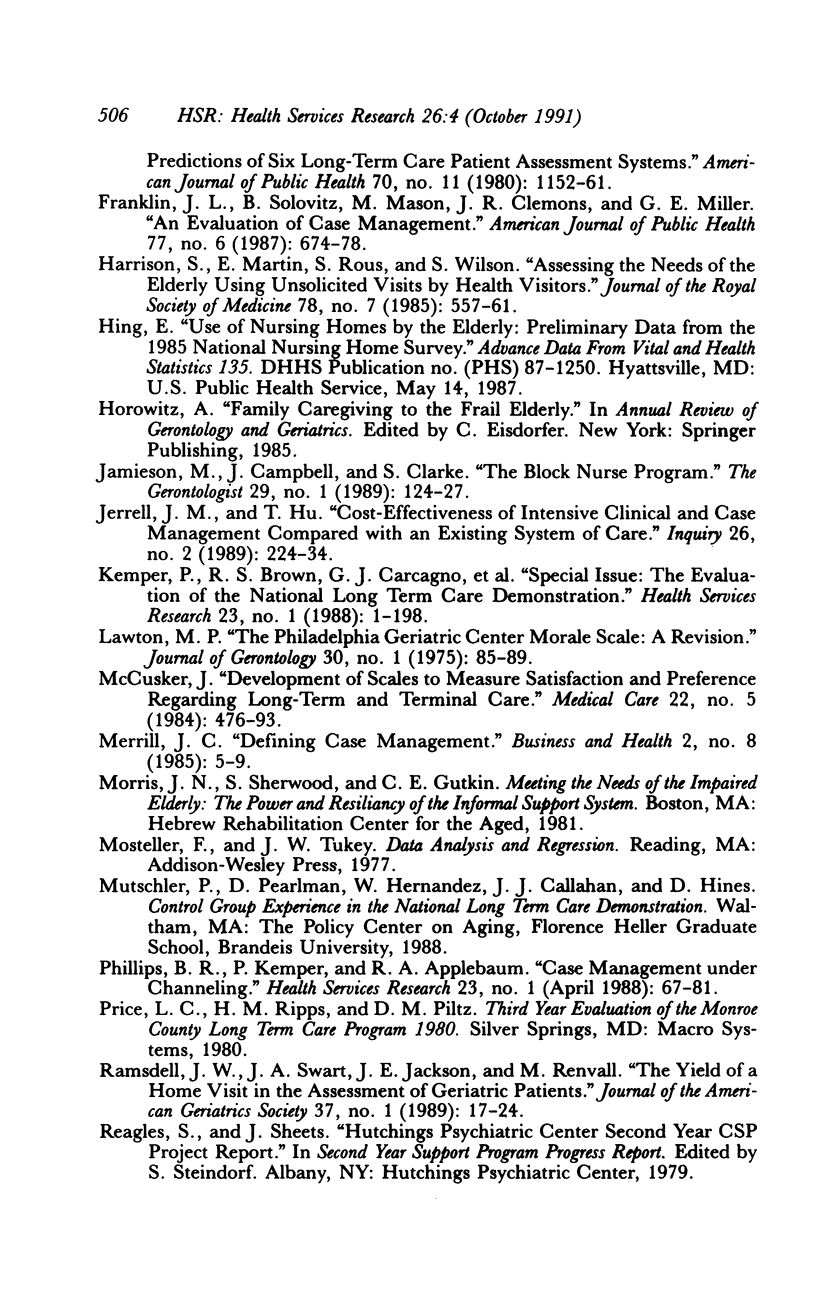
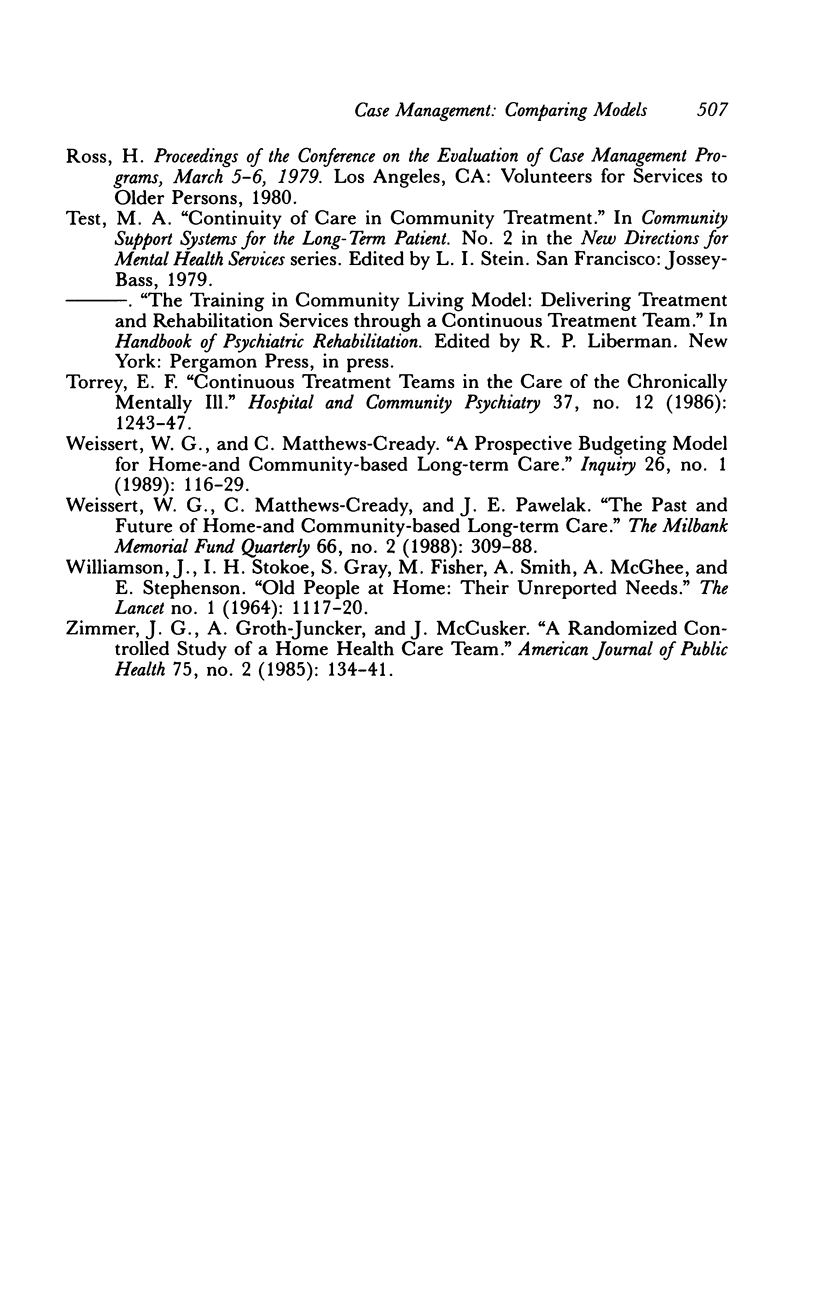
Selected References
These references are in PubMed. This may not be the complete list of references from this article.
- Applebaum R. A., Christianson J. B., Harrigan M., Schore J. The evaluation of the National Long Term Care Demonstration. 9. The effect of channeling on mortality, functioning, and well-being. Health Serv Res. 1988 Apr;23(1):143–159. [PMC free article] [PubMed] [Google Scholar]
- Carcagno G. J., Kemper P. The evaluation of the National Long Term Care Demonstration. 1. An overview of the channeling demonstration and its evaluation. Health Serv Res. 1988 Apr;23(1):1–22. [PMC free article] [PubMed] [Google Scholar]
- Davies B., Challis D. Experimenting with new roles in domiciliary service: the Kent community care project. Gerontologist. 1980 Jun;20(3 Pt 1):288–100. doi: 10.1093/geront/20.3_part_1.288. [DOI] [PubMed] [Google Scholar]
- Eggert G. M., Friedman B. The need for special interventions for multiple hospital admission patients. Health Care Financ Rev. 1988 Dec;Spec No:57–67. [PMC free article] [PubMed] [Google Scholar]
- Foley W. J., Schneider D. P. A comparison of the level of care predictions of six long-term care patient assessment systems. Am J Public Health. 1980 Nov;70(11):1152–1161. doi: 10.2105/ajph.70.11.1152. [DOI] [PMC free article] [PubMed] [Google Scholar]
- Franklin J. L., Solovitz B., Mason M., Clemons J. R., Miller G. E. An evaluation of case management. Am J Public Health. 1987 Jun;77(6):674–678. doi: 10.2105/ajph.77.6.674. [DOI] [PMC free article] [PubMed] [Google Scholar]
- Harrison S., Martin E., Rous S., Wilson S. Assessing the needs of the elderly using unsolicited visits by health visitors. J R Soc Med. 1985 Jul;78(7):557–561. doi: 10.1177/014107688507800708. [DOI] [PMC free article] [PubMed] [Google Scholar]
- Jamieson M., Campbell J., Clarke S. The Block Nurse Program. Gerontologist. 1989 Feb;29(1):124–127. doi: 10.1093/geront/29.1.124. [DOI] [PubMed] [Google Scholar]
- Jerrell J. M., Hu T. W. Cost-effectiveness of intensive clinical and case management compared with an existing system of care. Inquiry. 1989 Summer;26(2):224–234. [PubMed] [Google Scholar]
- Lawton M. P. The Philadelphia Geriatric Center Morale Scale: a revision. J Gerontol. 1975 Jan;30(1):85–89. doi: 10.1093/geronj/30.1.85. [DOI] [PubMed] [Google Scholar]
- McCusker J. Development of scales to measure satisfaction and preferences regarding long-term and terminal care. Med Care. 1984 May;22(5):476–493. doi: 10.1097/00005650-198405000-00011. [DOI] [PubMed] [Google Scholar]
- Merrill J. C. Defining case management. Bus Health. 1985 Jul-Aug;2(8):5–9. [PubMed] [Google Scholar]
- Phillips B. R., Kemper P., Applebaum R. A. The evaluation of the National Long Term Care Demonstration. 4. Case management under channeling. Health Serv Res. 1988 Apr;23(1):67–81. [PMC free article] [PubMed] [Google Scholar]
- Ramsdell J. W., Swart J. A., Jackson J. E., Renvall M. The yield of a home visit in the assessment of geriatric patients. J Am Geriatr Soc. 1989 Jan;37(1):17–24. doi: 10.1111/j.1532-5415.1989.tb01563.x. [DOI] [PubMed] [Google Scholar]
- Torrey E. F. Continuous treatment teams in the care of the chronic mentally ill. Hosp Community Psychiatry. 1986 Dec;37(12):1243–1247. doi: 10.1176/ps.37.12.1243. [DOI] [PubMed] [Google Scholar]
- WILLIAMSON J., STOKOE I. H., GRAY S., FISHER M., SMITH A., MCGHEE A., STEPHENSON E. OLD PEOPLE AT HOME. THEIR UNREPORTED NEEDS. Lancet. 1964 May 23;1(7343):1117–1120. doi: 10.1016/s0140-6736(64)91803-3. [DOI] [PubMed] [Google Scholar]
- Weissert W. G., Cready C. M. A prospective budgeting model for home- and community-based long-term care. Inquiry. 1989 Spring;26(1):116–129. [PubMed] [Google Scholar]
- Weissert W. G., Cready C. M., Pawelak J. E. The past and future of home- and community-based long-term care. Milbank Q. 1988;66(2):309–388. [PubMed] [Google Scholar]
- Zimmer J. G., Groth-Juncker A., McCusker J. A randomized controlled study of a home health care team. Am J Public Health. 1985 Feb;75(2):134–141. doi: 10.2105/ajph.75.2.134. [DOI] [PMC free article] [PubMed] [Google Scholar]


